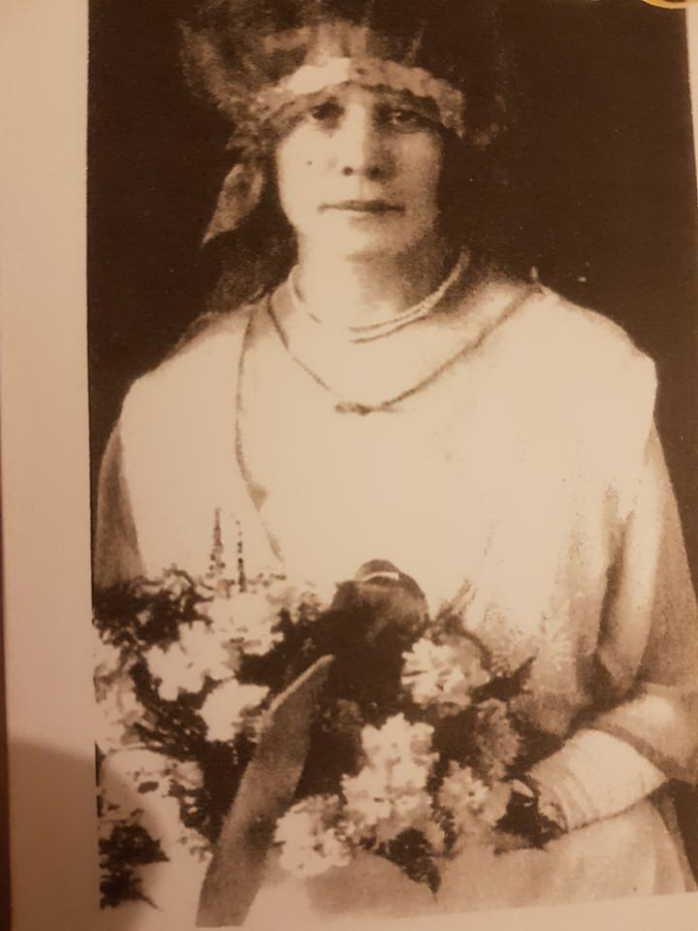

CULTURALSENSITIVITYMESSAGE
FirstPeoplesofAustraliashouldbeaware that the Australian Settlers Magazine contains images, voices or names of deceased persons. For some First Peoples communities, seeing images or hearing recordings of persons who have passed, may cause sadness or distress and, in somecases,offense.
LANGUAGE
Certain records contain language or include depictions that are insensitive, disrespectful, offensive or racist. This material reflects the creator’s attitude or that of the period in which the item was written, recorded, collected or catalogued. They are not the current views of the Publisher, and do not reflect current understanding and are not appropriatetoday.
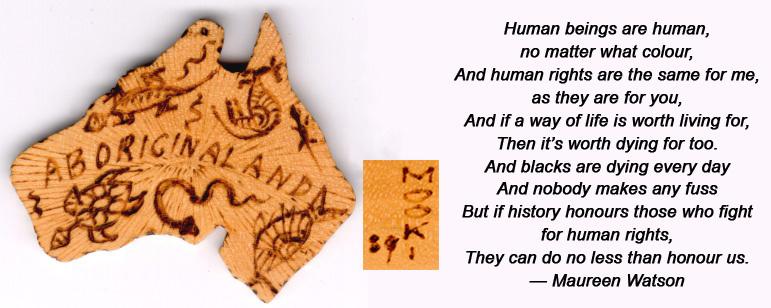

FEEDBACK
Whilst every effort is made to ensure the most accurate information is presented, some content may contain errors. The level of documentation for collection items can and does vary, dependent on when or how the item was collected. We encourage and welcome contact from First Peoples Communities, scholars and others to provide advice to correct and enhanceinformation.
Dawson River Murri
Maureen Watson
Beauty is not in the face;
intheheart.
Acknowledgement of Country
We respect and honour Aboriginal and Torres Strait Islander Elders past, present and future. We acknowledge the stories, traditions and living cultures of Aboriginal and Torres Strait Islander peoples on this land and commit to building a brighter future together.
walking together towards treaty
Historic transfer of Peat Island agreed
MinisterforPlanningandMinisterfor HomesAnthonyRobertssaidthetransfer markedanhistoricmomentthat recognisestheculturalconnectionofthis landtothelocalAboriginalcommunity.
“The NSW Government is rightfully returning Peat Islandtotheoriginalcustodiansofthislandtoensure therichheritageofthisplaceispreservedandisableto becelebrated,”MrRobertssaid.
“Movingforward,wewillworkwiththeDLALCtohelp realiseitsvisionforPeatIslandtobeusedinwaysthat willcreateeconomicandculturalopportunitiesforthe localAboriginalpopulationandforallAustralians.”
MrRobertssaidthetransferofPeatIslandfulfilledan importantpromiseoftheGovernment.
“BackinJanuary,theGovernmentstateditsintentto transfer Peat Island back to the local Aboriginal community,andI’mdelightedthattodaythishasbeen achieved.
“This demonstrates the Government’s strong commitment to preserving the historic legacy both Indigenousandnon-Indigenousheritageofplaceslike PeatIsland.”
Minister for Aboriginal Affairs Ben Franklin said the transfer highlighted the Government’s ongoing commitment to acknowledging the importance of Country to Aboriginal communities and Aboriginal ownership.
“ThisagreementpavesthewayforthelocalAboriginal communities to prepare planning proposals for their landtobecomearichembodimentoflocalAboriginal culture,identityandheritage,”MrFranklinsaid.
Parliamentary Secretary for the Central Coast Adam Crouchsaidwiththetransfernowcompleted,workcan beginonbringingPeatIslandbacktolife.
“Duringthenext12months,workstobecompleted includethedemolitionofderelictstructurestoaddress significanthealthandsafetyrisks,alongwithclearingof vegetationandclean-upofdebrisontheisland.”
DLALCChiefExecutiveOfficerBrendanMoylesaidthe transferrepresentedamomentoficonicsignificance forthelocalDarkinjungpeople.
“Toooften,touristsfromaroundAustralianandthe worldbypassSydneytolearnmoreaboutancient Aboriginaldreamingstoriesandpracticesinplaceslike theNorthernTerritoryandelsewhereinNorthern Australia,”MrMoylesaid.
“ThistransferwillallowustoworkwiththeNSW Governmenttocreateaninternationallyrenowned placewheretheancientculturesandcreationstories canbecelebratedrighthereonSydney’sdoorstep.”
DLALCChairpersonBarry‘BJ’Duncansaidthetransfer wasachievedfollowingalongperiodoffruitful engagementwiththeGovernment.
“DLALCisproudofthishistorictransfer.Thiswill trulybeoneofthejewelsinthecrownofLand RightsinNSWandwillhelpallAustraliansto
inastunningspacethatalsorecognisesthe
Australia,”MrDuncansaid. ThelandtransferhasbeennegotiatedbyPropertyand DevelopmentNSW,onbehalfoftheNSWGovernment, withtheDLALC.
Peat Island is a small island of approximately eight hectares in the Hawkesbury River, just north of Sydney, New South Wales, Australia.
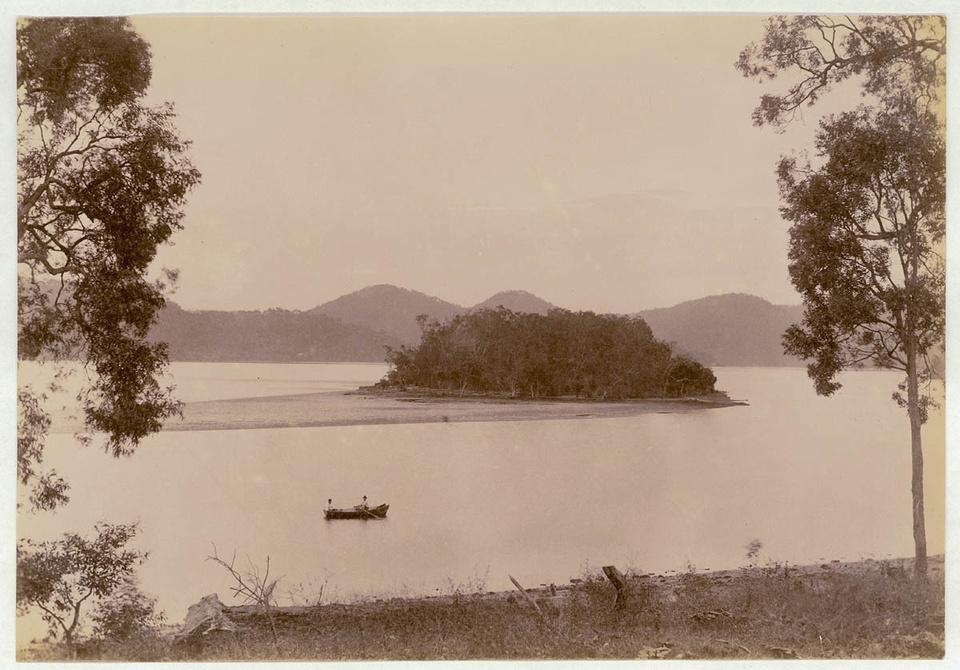
 The NSW Government has confirmed a landmark agreement to transfer ownership of Peat Island and a portion of the mainland foreshore at Mooney Mooney on NSW’s Hawkesbury River to the Darkinjung Local Aboriginal Land Council (DLALC).
The NSW Government has confirmed a landmark agreement to transfer ownership of Peat Island and a portion of the mainland foreshore at Mooney Mooney on NSW’s Hawkesbury River to the Darkinjung Local Aboriginal Land Council (DLALC).



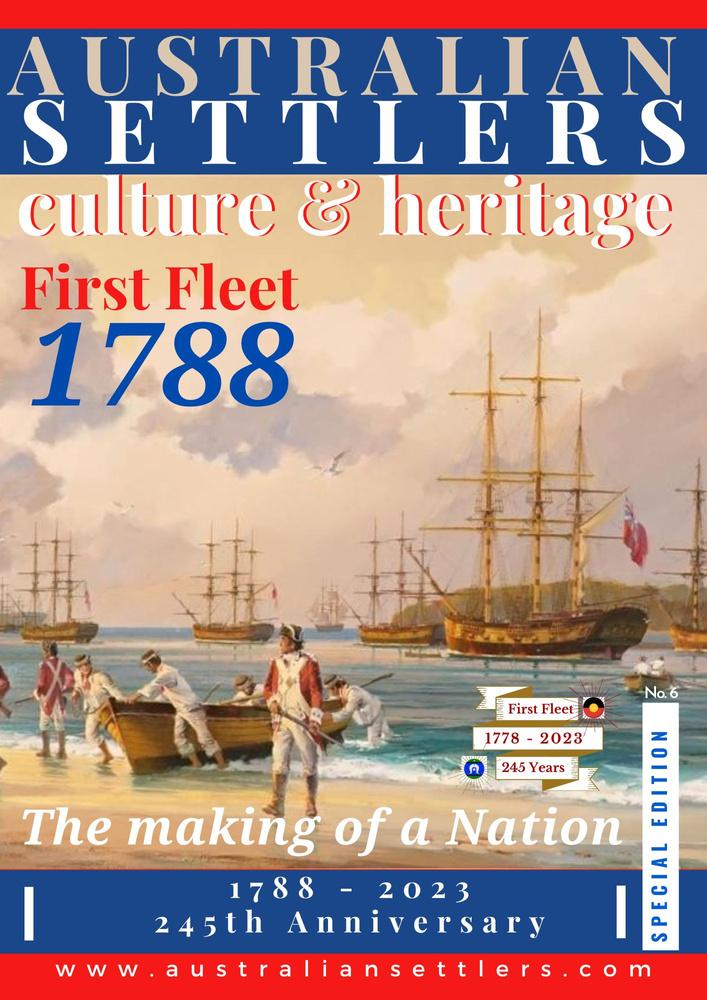
1794inthenewAustralian settlementisIntriguing, Inspiring,Incomprehensible andInsightful... Intriguingastohowthenew settlerssurvivedsuchhardships andGovernancefromtheNSW Corps,tothemarriagesbetween convictsandtheBonafidefree settlersthatarrivedaboardthe 'Bellona'.
theysettlewithnewlandgrantsin Toongabbie,HuntersHillandat MulgravePlaceintheHawkesbury River.Findingfaith,hope,loveand thefortitudetoovercomesetbacks.



Incomprehensibletothetreatment oftheancientAustralia'snative inhabitants.Tothebeginningof theFrontierWarswhichledtothe attacksbetweentheoldandnew settlers.ThestoryofPemulwuy andthemanwhoshothimHenry Hacking.Tothebrutalmurders aroundToongabbieandThe HawkesburyRiver. Insightfulcontentinthisedition andwesharejustasmallpartof Australia'shistoryinthesepages. Lookoutfortheinformationon theROSEFamilyandFIRST FLEETanniversaries.
Sydney Cove
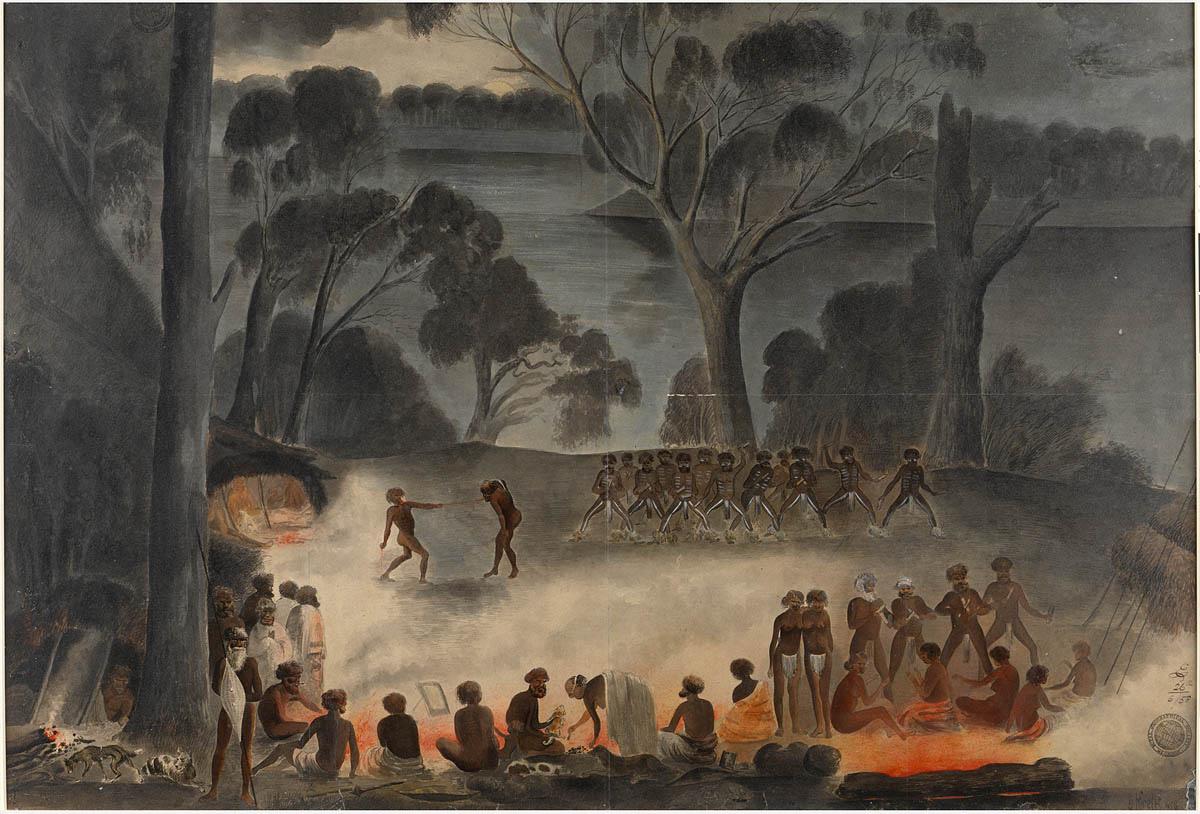
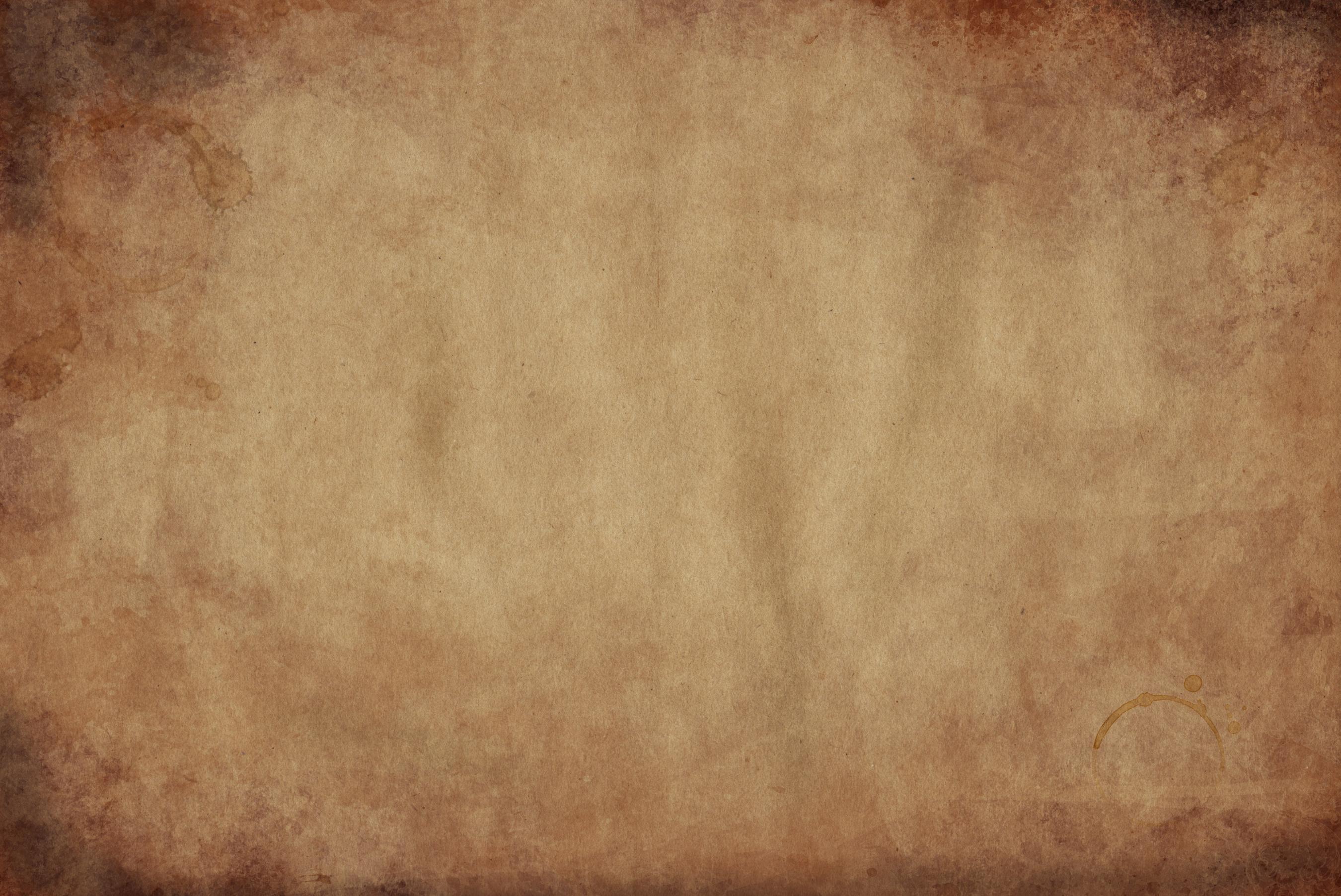




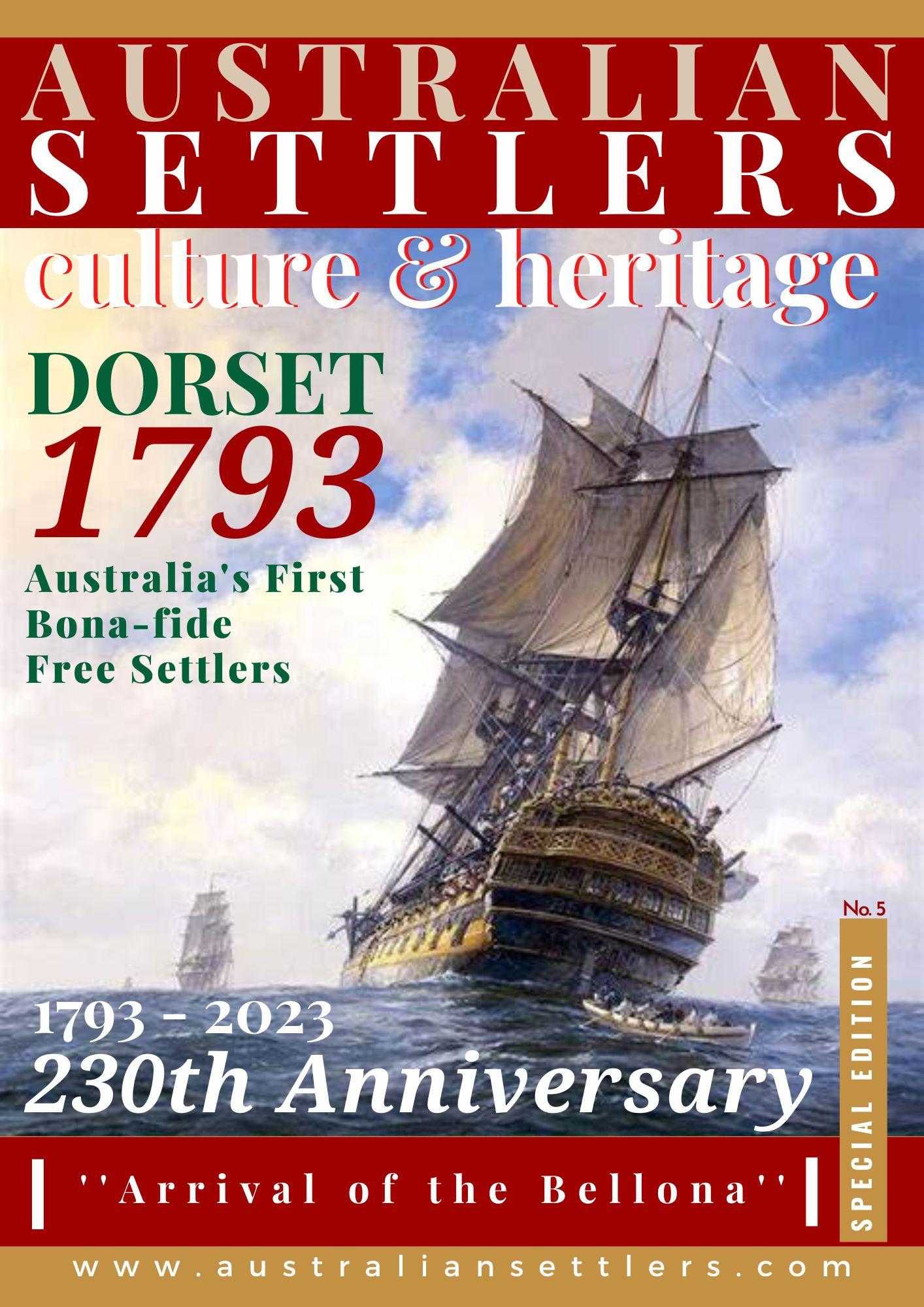
inside the issue
The ''Frontier Wars'' in the colonial historyof Australia''

Hacking, Henry The Man Who Shot Pemulwuy
Hacking was possibly the first colonist to shoot
wound an indigenous person in Australia He might also have been the first to kill an Aborigine

Toongabbie
Toongabbie is the site of the first serious
made in Australia, and
aboriginal name is “Place near
of

Hawkesbury Settlement

Lieutenant Governor Grose
group
Cranbrook Rose Bay
About 1873 James White bought Cranbrook, Rose Bay, from the estate of Robert Towns and engaged John Horbury Hunt to carry out large extensions He filled it with 'costly art treasures': European porcelain and pictures by Italian, German and English artists






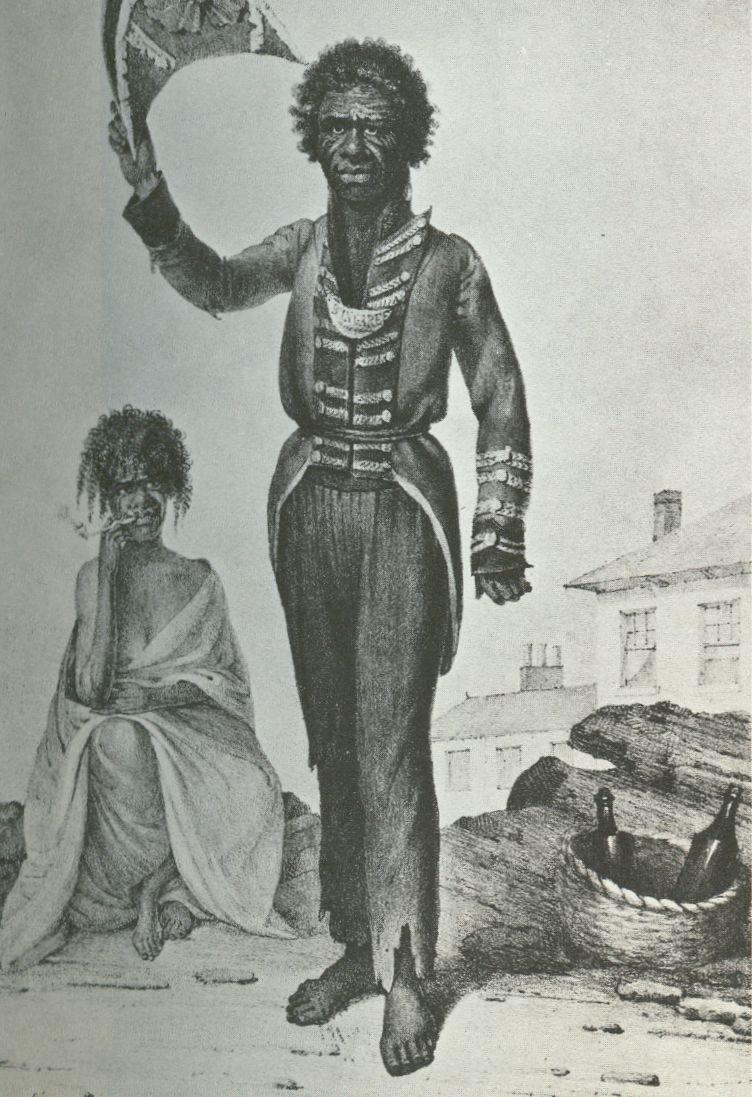

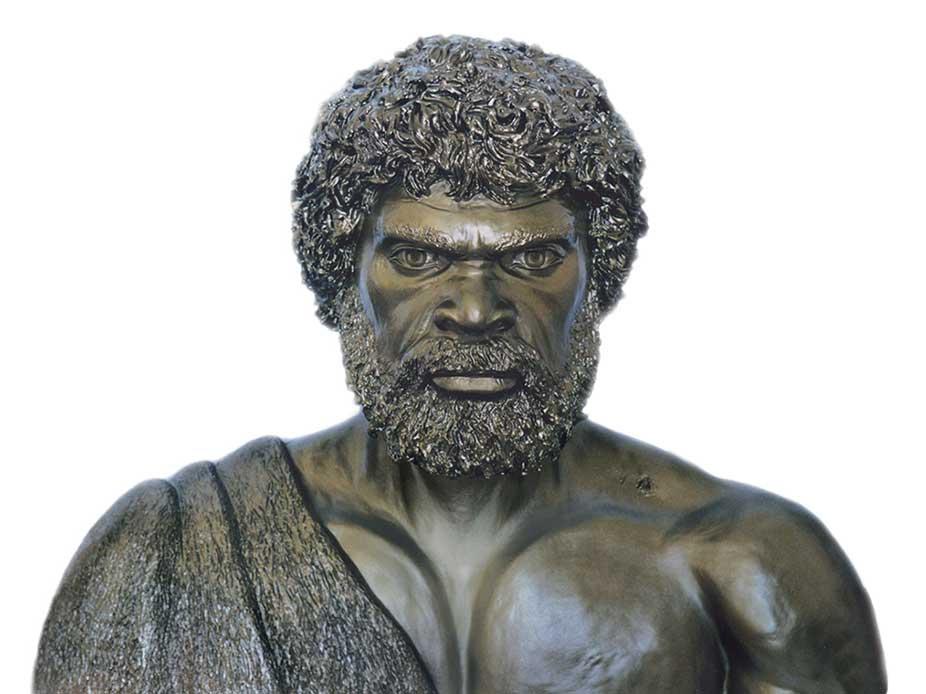
th


1778 heralds the arrival of Australia's first fleet, the First Fleet of 11 ships, with more than 1480 men, women and children onboard, although most were British, the prisoners (convicts) with a large minority from Ireland and Scotland were also African, American, French convicts.


Captain Arthur Phillip was appointed Commodore of the fleet, the convoy of 11 ships, two Royal Navy escort ships, HMS Sirius and HMS Supply.
accompanied six convict transports, the Alexander, Charlotte, Friendship, Lady Penrhyn, Prince of Wales and the Scarborough, and three store ships, the Borrowdale, Fishburn and Golden Grove.
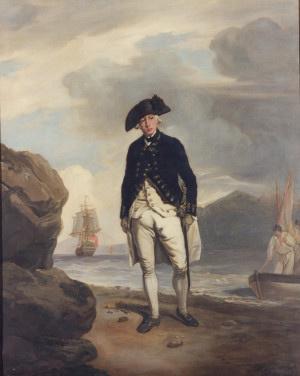

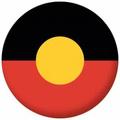



The arrival of the First Fleet at Sydney Cove in January of 1788 marked the beginning of the European colonisation of Australia.
After Britain lost its American colonies in 1783 the jails of England were full.
The British decided to begin transporting prisoners to Australia, which had recently been claimed for the British Crown by Lieutenant James Cook.
The First Fleet of ships, commanded by Captain Arthur Phillip, set up a convict settlement at Sydney Cove (now Circular Quay) on 26 January 1788. This was the beginning of convict settlement in Australia, becoming the first governor of the colony of New South Wales.
Phillip faced many challenges in the early years of settlement. He was prepared to punish people who broke the rules, but also rewarded convicts and free settlers who behaved well. Almost straight away, the new colony faced starvation. The first crops failed because of the lack of skilled farmers, spoilt seed brought from England, poor local soils, an unfamiliar climate and bad tools.
Phillip insisted that food be shared between convicts and free settlers. The British Officers didn’t like this, nor the fact that Phillip gave land to trustworthy convicts. But both actions meant that the colony survived, and they began an attitude of fairness that is still prized in Australia today.
The arrival of the First Fleet immediately affected the Eora nation, the traditional Aboriginal owners of the Sydney area.
Violence between settlers and the Eora people started as soon as the colony was set up. The Eora people, particularly the warrior Pemulwuy, fought the colonisers. This conflict was mainly over land and food.
After a voyage of three months the First Fleet arrived at Botany Bay on 24 January 1788. It was made up of two Royal Navy vessels, three store ships and six convict transports.
First Fleet Settlement
It was on the banks of the Hawkesbury and its tributaries that some years afterwards the first successful agricultural colonists settled themselves, from whom the following pitiful statements were gleaned by Joseph Smith:
"McDonald River, Oct 3, 1845 "I arrived here in Governor Phillip's time, when I was only fourteen years old
The term Australia comprehends the whole Island Continent and is thus the largest Island in the world
On the 11th of April 1770, Captain Cook sighted New Holland, and anchored on the 27th, in Botany Bay, from the fact that all round its coast a great variety of singular plants were selected by Joseph Banks, his botanist.
Captain Cook after sailing nearly all round the inland and taking possession of it in the name of the British Government under the title or New South Wales, from the resemblance it had to many parts of the Welsh coast at home
No appropriation, however, appears to have been made of the discovery of Cook until the 20th of January 1788, when Captain Arthur Phillip, the first Governor of the colony, arrived at Botany Bay in the Sirius, with six transports and three store ships.
Seven days after the Captain sailed to Port Jackson, which to his great joy he found to be one of the first harbours in the world, and on the 26th of January 1788, landing at Sydney Cove, he founded the colony.
The day after, the 27th of January, the new Governor marked off sites for buildings, and landed his cargo of troops, crew, and prisoners, as well as his stock, which consisted of one bull, four cows, one bull calf, one stallion, three mares, and three colts, with also numerous stores.
As may be well imagined, the labour and hardships of this little band in a country covered with a dense scrub, where roads and bridges were unknown, were severe in the extreme.
I and eighteen others laid in a hollow tree for seventeen weeks and cooked with a kettle with a wooden bottom stuck into the ground, and a fire kindled round it I have often taken grass and pounded it and made soup from a native dog.
For seventeen weeks I had only, five ounces of flour a day. I have been yoked with twenty or thirty others to drag timber
About eight hundred died under such treatment at Toongabbie. One man, because he was thrown into the grave, he called out "don't cover me up!" but the overseer replied, "You'll die tonight, and then we shall have the trouble to come back again.'' He recovered, however, and is still alive. His name is Glasshouse, and lives at Richmond.
They had a large hole for the dead, where corpses were thrown in day and night without any ceremony or service over them, I have seen men flogged with five or six hundred lashes at a time I once saw a man hung for stealing a few biscuits. Any man would have committed murder for the sake of provisions I would have committed three murders for a week's provision.'
'I was chained seven weeks on my back for stealing a few greens. After seven years I got my liberty, and then started for the Hawkesbury
I soon saved enough to buy old Brown's farm at Pit Town and have now by me £1000 in cash. I have by my house besides 80, 30, 50, and 75 acres, and some fine cattle
With a true account of some of the extraordinary settlers who individually suffered the scorn; privations, and hardships, when the country was in its penal colony infancy.
Weareanorganisation comprisedofdescendantsof thosewhoarrivedinSydney CovewiththeFirstFleeton26 January1788&alsothose interestedintheFirstFleet. TheFellowshipwasformedin1968, andsincethenover9167descendants haveestablishedtheirlineageand joinedtheFellowship. Linkshavesofarbeenestablishedin 137familiestonofewerthan195 individualFirstFleetAncestors.There arecurrentlyover1650active members. Membershipisopentoanyonewho canprovehisorherrelationshiptoa FirstFleeter–Convict,Marine, Seaman,Civilian(includingWives& Children)orGovernmentOfficial.

Additionally,AssociateandFriend membershipsarealsowelcomed. TheFellowship'sheadquartersis locatedin"FirstFleetHouse"at105 CathedralStreet,Woolloomooloo,an historicsectionofSydney.
coveringSydneysuburbs,regional NSW,Victoria,theACT,Queensland, WesternAustraliaandTasmania. FormationofadditionalChaptersis encouraged.Chaptermembershipis availabletobonafideFellowship Members,AssociatesandFriends.
FleetandtheFellowshipofFirst Fleeterscanbefoundatthelinksin thetablebelow:

Phone: 02 9360 3788 E mail: fffaus@optusnet.com.au
OFFICE HOURS
Monday, Wednesday & Friday 10.00am to 3.00pm
If visiting FF House to do Research, please telephone beforehand and make an appointment
(www.fellowshipfirstfleeters.org.au)
F i r s t F l e e t H o u s e
f f i c e A d d r e s s :
i r s t F l e e t H o u s e ,
0 5 C a t h e d r a l S t .
o o l l o o m o o l o o
y d n e y , N S W , 2 0 1 1
h e r e o u r s t o r i e s


The ''Frontier Wars'' in the colonial history of Australia
We extend our respect to Elders – past, present and future.
The Australian Frontier Wars refer to the series of conflicts between the British colony and indigenous Australians that lasted from 1788 until the 1930s.

In this edition of Australian Settlers, we focus on the legacy of the Indigenous fight for Australia, as we near the 245th anniversary of the 1778 arrival of the first fleet. And the 230th anniversary of the arrival of Australia's first free invited settlers to the colonised country, aboard the Bellona.
According to The Queenslander, 1 May 1880, p.560, the ‘bush slang’ word ‘dispersal’ was often used as a convenient euphemism for ‘wholesale massacre’. Other euphemisms such as ‘clear the area’, pacify’, ‘teach them a lesson’, ‘affray’, ‘collision’, or ‘fell upon’ were also used.
heralds the arrival of Australia's first fleet, the First Fleet of 11 ships, with more than 1480 men, women and children on onboard, although most were British, the prisoners (convicts) with a large minority from Ireland and Scotland were also African, American, French convicts.
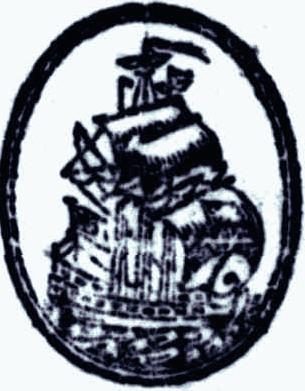
Itisdifficulttocomprehendhow devastatingthiseventwastothe AboriginalclansoftheSydneyarea. BennelongtoldJudgeAdvocatDavid CollinsthathisfriendColebee’stribehad beenreducedtoonlythreepeople.Those witnessingcouldnotremainunmoved. Thecolonistshaddestroyedwithinmonthsawayoflife thathadoutlastedBritishhistorybytensofthousands ofyears,andthepeoplesoonrealisedthatthe trespasserswerecommittedtonothinglessthantotal occupationoftheland Tomostsettlers,theAboriginalpeoplewereconsidered akintokangaroos,dingoesandemus,strangefaunato beeradicatedtomakewayforthedevelopmentof farmingandgrazing.
Despitetheseimpacts,Aboriginalpeoplefoughta guerrillawarformanyyears Inaplacerenamed WoodfordBaybythesettlers,nowinLonguevilleinLane CoveCouncil,astockadewasbuiltin1790toprotect timberandgrasscuttersfromattacksbylocalclans. AttackshadbeenmountedagainsttheBritishelsewhere (learnmore),however,the‘eradication’,forthemost part,hadbeeneasy.Smallpoxhaddestroyedmorethan halfthepopulationandthosenotravagedbydisease weredisplacedwhenlandwasclearedforsettlements andfarms. Dispossessedofthelandthathadnourished themforsolong,theAboriginalpeople becamedependentonwhitefoodand clothing.Alcohol,usedasameansoftradeby theBritish,servedtofurthershatter traditionalsocialandfamilystructures.
At that time a native was living with us; and on our taking him down to the harbour to look for his former companions, those who witnessed his expression and agony can never forget either. He looked anxiously around him in the differentcoveswevisited;notavestigeon thesandwastobefoundofhumanfoot; the excavations in the rocks were filled with the putrid bodies of those who had fallenvictimstothedisorder;notaliving personwasanywheretobemetwith. Itseemedasif,flyingfromthecontagion, theyhadleftthedeadtoburythedead.He lifted up his hands and eyes in silent agonyforsometime;atlastheexclaimed, ‘All dead! all dead!’ and then hung his head in mournful silence, which he preserved during the remainder of our excursion.
Somedaysafterhelearnedthatthefew ofhiscompanionswhosurvivedhadfled up the harbour to avoid the pestilence that so dreadfully raged. His fate has beenalreadymentioned.
He fell a victim to his own humanity when Booroong, Nan bar ray, and others were brought into the town covered with the eruptions of the disorder.
OnvisitingBrokenBay,wefoundthat ithadnotconfineditseffectsto PortJackson,forinmanyplacesour pathwascoveredwithskeletons, andthesamespectaclesweretobemet withinthehollowsofmostofthe rocksofthatharbour. JudgeAdvocateDavidCollins,
I have heard it maintained by others that it is the course of Providence, that blacks should disappear before the white, and the sooner the process was carried out the better, for all parties I fear such opinions prevail to a great extent Very recently in the presence of two clergymen, a man of education narrated, as a good thing, that he had been one of a party who had pursued the blacks, in consequence of cattle being rushed by them, and that he was sure that they shot upwards of a hundred.
I have myself heard a man, educated, and a large proprietor of sheep and cattle, maintain that there was no more harm in shooting a native, than in shooting a wild dog. When expostulated with, he maintained that there was nothing wrong in it, that it was preposterous to suppose they had souls In this opinion he was joined by another educated person present
Polding
National Trust of Australia
We actively protect and conserve places of heritage significance for future generations to enjoy. The National Trusts are Australia’s leading conservation organisations. Our mission, which started with the conservation of historic Sydney architecture, has grown to include natural, Indigenous and cultural heritage in every state and territory. Explore our beautiful places around Australia and join us as we celebrate our built, natural and cultural heritage.
The Australian National Trust movement was established in New South Wales in 1945 by Annie Wyatt who, along with a group of other citizens, raised community consciousness of widespread destruction of the built and natural heritage in Sydney.
The National Trust movement quickly spread across Australia with the other States establishing National Trust offices throughout the 1950’s and 60’s.
The Northern and Australian Capital Territories were the last to establish a National Trust in 1976 Each State and Territory National Trust is a fully autonomous entity in its own right responsible for managing its own affairs.
The National Trusts are the only conservation organisations in Australia concerned with all aspects of heritage, natural and cultural, tangible and intangible. We are the pre-eminent independent community bodies that promote conservation of and access to Australia’s unique natural, cultural and Indigenous heritage



We rely heavily on community support generated through membership subscriptions, sponsorship, donations and bequests, property admissions and retail sales Of the collective total operational revenue generated by the organisation less than 10% is sourced from government.
We rely heavily on community support generated through membership subscriptions, sponsorship, donations and bequests, property admissions and retail sales. Of the collective total operational revenue generated by the organisation less than 10% is sourced from government.
We actively protect and conserve places of heritage significance for future generations to enjoy. Explore
beautiful places around Australia and join us as
celebrate our built , natural and cultural heritage.
1788 they encountered active resistance from the Aboriginal and Torres Strait Islander owners and custodians of the lands.
In the frontier wars which continued into the 1920s frontier massacres were a defining strategy to contain and eradicate that resistance.
As a result, thousands of Aboriginal men, women and children were killed.
This site presents a map, timelines, and information about frontier massacres in Australia between 1788 when British colonisation began until 1930.

Only frontier massacres for which sufficient evidence exists and can be verified are included.
The map also includes information about frontier massacres of non Aboriginal people such as colonists and others in Australia in the same period.
Centre For 21st Century Humanities
The killing times: the massacres of Aboriginal people Australia must confront
The truth of Australia’s history has long been hiding in plain sight.
The stories of “the killing times” are the ones we have heard in secret or told in hushed tones. They are not the stories that appear in our history books, yet they refuse to go away.
The colonial journalist and barrister Richard Windeyer called it “the whispering in the bottom of our hearts”. The anthropologist William Stanner describedanational“cultofforgetfulness”.
But calls are growing for a national truth telling process. Such wishes are expressed in the Uluru statementfromtheheart.
Reconciliation Australia’s 2019 barometer of attitudes to Indigenous peoples found that 80% of peopleconsidertruthtellingimportant.
Almost 70% of Australians accept that Aboriginal people were subject to mass killings, incarceration and forced removal from land, and their movement wasrestricted.
www.theguardian.com/australia-news/2019/mar/04/thekilling-times-the-massacres-of-aboriginal-people-australiamust-confront
our“conspiracyofsilence”.
e a p o n s
Colonists and Native Police Weapons
1794-1860:
Inthisperiodthemuzzle loadingmusketwasthekey weaponusedbyattackers. Mostwidelyusedwasthe BrownBessMusket.
IssuedtoBritishregimentswhichservedonthe frontierintheAustraliancoloniesfrom1788tothe 1840s,itwasasmoothboremuzzleloading075 calibreflintlockweaponthatcouldfire3shotsin45 secondsoverarangeof80yards(73metres).The maindrawbackwasthatitwasloadedandfiredfrom astandingposition.
Severalversionsofthemusketwereusedincarrying outfrontiermassacres,includingthebayonetthat wasfittedtothemusketbarrelandthecarbine, whichhadashorterbarreldesignedforuseon horseback
Before1830,mostperpetratorsoffrontiermassacres ofAboriginalpeoplewereonfoot.Inthecentury following, 1830-1930
Thehorsebecamethevehicleofchoice althoughonatleastoneoccasioninthe NorthernTerritoryinthe1920s,camels wereused.Thehorseandthecamel wereeffectiveweaponsindriving Aboriginalpeoplefromtheircampsites. ThecarbinewasusedbythenativepoliceinthePort PhillipDistrictinthe1840sandintheNorthern DistrictofNewSouthWalesinthe1850s.
TheBakerriflewhichwasusedbysomecolonistson thefrontierto1860,wasmoreaccuratethanthe smoothboremusketandcouldfireoveralonger range.Otherweaponsthatwererecordedinthis periodincludeswords,cutlasses,pistols,swivelguns, carronadesandships’cannons. Anotherweaponwaspoison strychnine,arsenicand plasterofparis eitherinfreshlymadedamperorin flourusedbyAboriginalpeopletomakedamper
Where large numbers of Aboriginal people were corralled in preparation for massacre, they were tied up at the wrists with long leather straps or rope. In many instances their bodies were burnt, and the bones crushed to hide the evidence.
1860-1900:
Breech loading rifles became widely available after1860.Theyfiredoveralongerrangeof300 yards(274metres)andcouldbeloadedandfired fromaproneposition
According to Jonathan Richards, the Queensland NativePolicewereissuedwithBritishmadeTerry breech loading rifles in 1861, single shot Snider Enfield rifles in 1874 and Martini Henry Enfield riflesafter1884.(Richards2008:55 6)
AccordingtoChrisOwenfirearmsusedbypolice intheKimberleyinWesternAustraliainthe1880s ‘wereinitiallythesingleshotSnider Enfieldrifles, whichfiredenormous.577cartridges,althoughby the late 1890s they were considered too old, complicatedandpronetobecomingcloggedwith sand’
The Winchester Repeating Rifle arrived in Australia in the 1880s and could fire many shots before reloading and ‘was the weapon of choice [inWA]throughthemid 1890s.
The side arms used were the Webbley revolver until they were replaced by Smith & Wesson colts.’ (Owen 2016:165 ) The Snider Enfield was issued to police in the Northern Territory in the 1880s
Other weapons such as swords and cutlasses were phased out, but poison including poisoned alcohol and tobacco continued in use across northernAustralia Inthe1890sintheKimberley and the Northern Territory, Aboriginal people werealsotiedupwithneckchainsinpreparation for frontier massacre. The horse remained the vehicle for carrying colonel attackers to frontier massacresitesacrossAustralia
Centre For 21st Century Humanities www.c21ch.newcastle.edu.au/colonialmassacres/
a p o n s
Aboriginal and Torres Strait Islander weapons
Incarryingoutthe13recorded massacresofnon-Aboriginal people,AboriginalandTorres StraitIslanderwarriorswere reportedaswieldingwooden andstonetippedspears,nulla nullas,largestonesandrocks, waddiesandhatchets.
They also used fire to set alight huts and homesteads and smoke out their intended victims The bodies of frontier massacre victims were often mutilated and dismembered
The only known frontier massacres when Aboriginal or Torres Strait Islander attackers used firearms against their intended victims was in the Latrobe Valley in Victoria in the 1840s; and the slaughter of the Mawby family by Jimmy Governor and his brother Joe at Breelong in New South Wales in 1900.
In each of these cases, the ATSI attackers rode horses. Most frontier massacres by Aboriginal and Torres Strait Islander people were usually carried out on foot.
Dreamtime warriors: Aboriginal men are dressed for war brandishing spears, clubs and boomerangs in historical images depicting the resistance of first Australians against colonial expansion.



A b o r i g i n a l
R e s i s t a n c e P e m u l w u y
L e a d e r
Two years after the arrival of the First Fleet, Aboriginal warrior Pemulwuy began to resist the incursion of white settlers onto his people’s traditional lands. Despite being seriously wounded in 1797, he eluded capture until 1802 when he was shot dead. Pemulwuy’s head was cut off and sent to Sir Joseph Banks for his collection
 By Masha Marjanovich
By Masha Marjanovich
Two years after the arrival of the First Fleet, Aboriginal warrior Pemulwuy began to resist the incursion of white settlers onto his people’s traditional lands.
By April 1794, the violence between the Indigenous people and the farmers was frequent and extensive.
In the ‘Battle of Toongabbie’, the reprisal party of Europeans severed the head of a slain warrior and took it back to Sydney as evidence
www nma gov au
Pemulwuy... a Dharug word meaning earth or clay
Pemulwuy, also known as Pimbloy, was born in about 1750 north of the Georges River, not far from Botany Bay.
This engraving by Samuel John Neele of James Grant’s image of ‘Pimbloy’ is believed to be the only known depictionofPemulwuy.

It was published in Grant’s The narrative of a voyage of discovery, performed in His Majesty’s vessel the Lady Nelson, of sixty tons burthen, with sliding keels, in the years 1800, 1801 and 1802, to New South Wales, 1803. State Library of New South Wales Q80/18
Marine captain Watkin Tench described Pemulwuy as a "young man, with a speck, or blemish, on his left eye", while the first governor, Arthur Phillip, said he had lost an eye.
The Aboriginal man Colebee told Phillip that the toes on Pemulwuy's left foot had been bruised by a club, indicating he might have been a "carradhy" or clever man
Pemulwuy became accustomed to being shot at John Washington Price, who arrived in Sydney aboard the ship Minerva early in 1800, said: "He has now lodged in him, shot, sluggs and bullets, about eight or ten ounces of lead, it is supposed he has killed over 30 of our people, but it is doubtful on which side the provocation was given."
Pemulwuy
A member of the Bidjigal tribe, whose territory stretched from the Botany Bay southside to Bankstown, Pemulwuy's war began in December 1790 when he ambushed and speared governor Phillip's unarmed convict game shooter John McEntire. His spear struck deep into McEntire's side. Pemulwuy ran off into the bush McEntire seemed at first to survive the attack, but suddenly collapsed and died on January 20, 1791.
Phillip wrote: "It appeared rather extraordinary, that the natives should immediately know the man who wounded the gamekeeper, and his tribe; they said his name was Pemullaway, of the tribe of Bejigal "
Pemulwuy became accustomed to being shot at.
JohnWashingtonPrice,whoarrived inSydneyaboardtheshipMinerva earlyin1800,said:"Hehasnow lodgedinhim,inshot,sluggsand bullets,abouteightortenouncesof lead,itissupposedhehaskilledover 30ofourpeople,butitisdoubtfulon whichsidetheprovocationwasgiven."
A member of the Bidjigal tribe, whose territory stretched from the Botany Bay southside to Bankstown,Pemulwuy'swarbeganinDecember1790 when he ambushed and speared governor Phillip's unarmed convict game shooter John McEntire His spearstruckdeepintoMcEntire'sside.Pemulwuyran offintothebush.McEntireseemedatfirsttosurvive the attack, but suddenly collapsed and died on January20,1791
Phillip wrote: "It appeared rather extraordinary, that the natives should immediately know the man who woundedthegamekeeper,andhistribe;theysaidhis namewasPemullaway,ofthetribeofBejigal."
InMay1795,Pemulwuyoroneofhisfollowersspeared a convict near the Brickfields (the present Chippendale)
Two years later, he led an attack on the government settlement at Toongabbie. Settlers and soldiers took uptheirmusketsandpursuedtheAboriginalwarriors throughthenight Atsunrisetheyencounteredabout 100AboriginesjustoutsideParramatta,whofled The settlersenteredParramattaand,onehourlater,wrote David Collins, "were followed by a large body of natives, headed by Pe mul wy, a riotous and troublesomesavage"
Pemulwuy,inarage,threwaspearatasoldier "Many spearswerethrown,andonemanwashitinthearm andfivewereinstantlykilled,"wroteCollins.Dazedby seven pieces of buckshot in his head and body, Pemulwuy was captured and taken to hospital, but soonescaped
GovernorJohnHunterforesawPemulwuy'sdemisein March 1798 when he remarked: "A strange idea was found to prevail among the natives respecting the savage Pe mul way, which was very likely to prove fataltohimintheend Bothheandtheyentertained an opinion, that, from his having been frequently wounded,hecouldnotbekilledbyourfire arms."
Pemulwuy's end could be traced to cattle herder DanielConroy'sdeathandthewoundingofasettler, Smith. In May 1801, governor King ordered that the "hordesofnatives"livingaroundParramatta,Georges River and Prospect Hill be "driven back from the settlers'habitationsbyfiringatthem"
King outlawed convicts William Knight and Thomas Thrush, who had escaped and joined the Aboriginal resistance Heofferedarewardfortheircaptureand thatofPemulwuy Hisstrategyworked
In October 1802, King advised Lord Hobart at the HomeOfficeinLondonthat"twosettlers,nothaving the means of securing the persons of Pemulwuy and anothernative,shotthem" Whowerethey?
The runaways Knight and Thrush might logically be seenassuspects,butthereisnoevidenceforthis.
In his 1987 work of historical fiction Pemulwuy the Rainbow Warrior, Eric Willmot said that Pemulwuy and another Aborigine, Kiriwan, were killed "by the constabularyinanambush"
TheidentityofPemulwuy'skillercanbefoundinthe journal of Samuel Smith, a seaman on Matthew Flinders's HMS Investigator On July 20, 1802, Smith wroteaboutanAboriginecalled"Bumbliway,aSevere Enemy to White people, as he had Kill'd several" Smith continued: "At length, he was Shot by the Master of the Nelson Brig, that was Shooting in the Woods,hisheadbeingbroughtTranquillitywasagain restored"
BumbliwayisoneofmanyspellingsofPemulwuy. The"NelsonBrig"wasthesloopLadyNelson, whichaccompaniedtheInvestigatoronthefirst legofitscircumnavigationofAustralia.Theship didnothaveamaster,butherfirstmatewas HenryHacking,whohadbeenquartermasterof HMSSirius,theFirstFleet'sflagship.
"Being reckoned a good shot," said Judge Advocate David Collins, Hacking was allowed to shoot for the ship's officers and company Flinders rewarded him in 1796 for reporting the existence of a river in southernSydneybynamingPortHackingafterhim.
A depiction of the armed Aboriginal warriors that would have followed Pemulwuy into the Battle of Parramatta in 1797. ( Museum Whisperings )

ThelastrecordofPemulwuy’sfateexistsintheform ofanotewrittenbyGovernorKing alongtime enemyoftherebel–toBritishnaturalist,Joseph Banksand,sentalongsidePemulwuy’shead, supposedlyembalmedinspirits.“Aterriblepestto thecolony,hewasabraveandindependent character,”GovernorKingwrote.
In2017,MathewTrinca,thedirectoroftheNationalMuseumofAustralia (NMA) says, “The great mystery is what happened to him? We know that horribly,hisheadwasseveredfromhisbodyatthetimeofhisdeathand sent to England but the Museum has searched and others have searched forrecordsofhisremainsintheUnitedKingdominvain.”
“The story of Pemulwuy overturns assumptions that were made for generationsthatthislandwasn’tfoughtforbythefirstpeoples Thefirst peoplesofAustraliadidfightfortheirland,atdifferenttimesanddifferent placesandtheyfoughthardtopreservetheirwayoflife,theircultureand theirpeoples,”saysTrinca
TherewererumoursofPemulwuy’sheadbeingkeptattheRoyalCollegeof SurgeonsinLondon.Fromthere,theremainsaresaidtohavebeenmoved to the Natural History Museum, however the museum has no record of this. The repatriation of Aboriginal remains is a difficult pursuit. Trinca saysthatrepatriationhasbeenalong termgoaloftheNMA.
The Indigenous warrior defended the lands of Prospect, Toongabbie, Georges River, Parramatta, Brickfield Hill and the Hawkesbury River, raiding settlers’ farms and pillaging food and supplies.
Returning Pemulwuy remains
In 2010, upon a visit from Prince William, there was a renewed call for Pemulwuy’s remains to be returned to Australia’s Indigenous people.
The foundation for History Services was laid over thirty years ago when Kevin McGuinness began researching his family history. During his research, he was delighted to find four convicts in his family background. He became so fascinated by the lives that each had led, that it whets his appetite to find out more on other convicts who came to New South Wales.

To commence this quest, Kevin began compiling a summary of information on all convicts from the New South Wales Government Gazette, which was first published in 1832. This was the start of a massive research
that has culminated in the Convict Databases of History Services.
After
as the Sydney
the New South Wales
other sources of information,
1811 to 1831, Parliamentary Papers, State
Petitioners;
P R E S E A R C H
C O N V I C T S
From the collections of the State Library of New South Wales [DL Q79/64, page 91]
(From Watkin Tench's 'A complete account of the settlement at Port Jackson, in New South Wales ' 1793, London, G. Nicol) (Dixson Library)
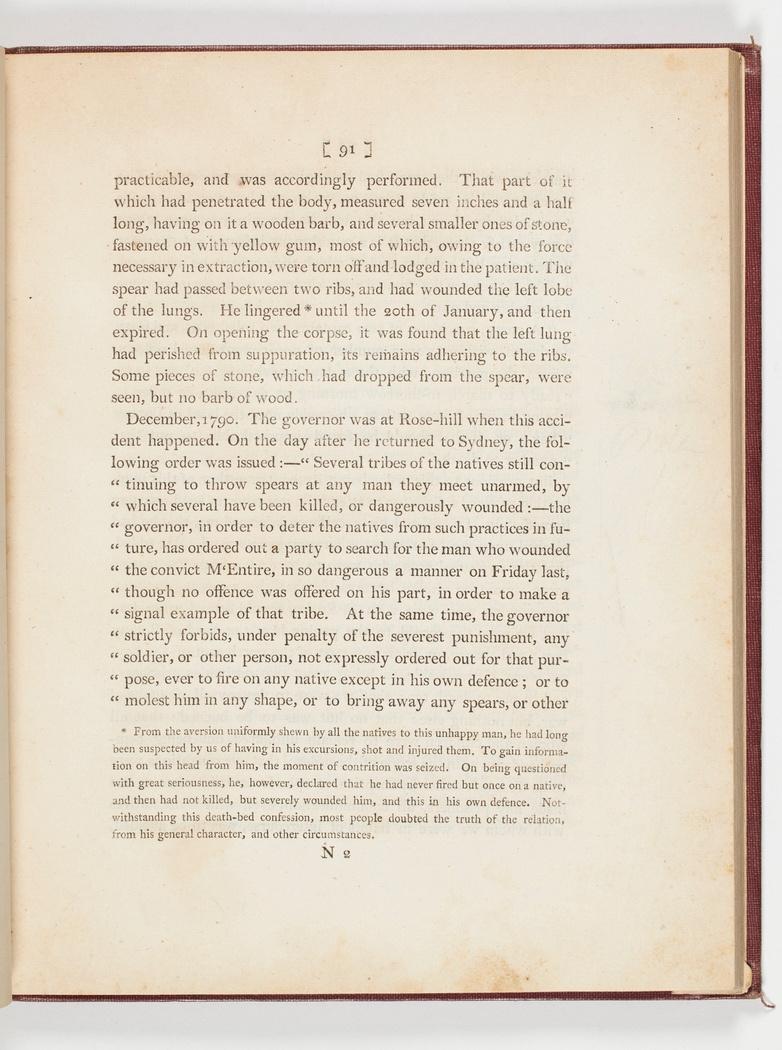
THE DEATH OF MCINTYRE AND PHILLIP'S ORDERS, DECEMBER 1790, FROM TENCH'S 'A COMPLETE ACCOUNT OF THE SETTLEMENT AT PORT JACKSON, IN NEW SOUTH WALES'.
Henry Hacking TheManWhoShotPemulwuy


He loaded his musket with heavy buckshot and fired at his attackers when they were 50 metres away Two fell, dead or wounded, while the others ran off, taking their injured companions
Despite King's assertion that Pemulwuy was shot by two settlers, the notion of a single killer is supported by David Dickinson Mann, the governor's clerk
He wrote in The Present Picture of New South Wales (1811) that the governor had offered a reward "to any person who should kill him [Pemulwuy] and bring in his head
This was soon accomplished by artifice, the man received the reward, and the head was sent to England in spirits by the Speedy"
It is, however, possible that Hacking was accompanied by second mate John Johnson, also known as the colourful Danish explorer Jorgen Jorgensen.
Smith's original manuscript is in the Mitchell Library I quoted from the paragraph which gives the clue to the killer in my book King Bungaree 11 years ago, not realising then that "Bumbilway" was Pemulwuy. Later research has revealed many different spellings for Pemulwuy.
For instance, Baulkham Hills nurseryman George Suttor used "Bimblewove" in his 1800 Memoirs, while William Macarthur called him "Pimelwag".
Hacking,aviolentmanand heavydrinker,hadbeen transportedtoNorfolkIslandin October1799forperjuryatthe trialofconvictAnnHolmes,his mistress.
In 1803, the year after Pemulwuy's death, he was sentenced to death for shooting and wounding HolmesinSydney.Hegotthedeathsentenceagainin 1804 for stealing naval stores from the HMS Investigator Hewaspardonedinbothcasesbyhisold shipmate,King.
HackingwaslatersenttoVanDiemen'sLandandwas the Hobart pilot from 1806 until 1816, when he was retiredfordrunkenness Hediedin1831
Pemulwuy'shead,preservedinspirits, wasreceivedinLondonbySirJoseph Banks.Inthe19thcentury,itwas knowntobeattheRoyalCollegeof SurgeonsinLondon.Manyskeletal remainsweresubsequently transferredtotheNaturalHistory MuseuminLondon.Itdeniesany knowledgeofit.
ThereisasymmetryinthefactthatPemulwuy,who had killed Phillip's game shooter, was killed by Hacking,sailorandgameshooterforHMSSirius Keith Vincent Smith is the author of King Bungaree (1992) and Bennelong (2001). Flinders University academic Peter Montheath has transcribed Smith's journal, published in April by Corkwood Press as Sailing with Flinders: The Journal of Seaman Samuel Smith.

Hacking was possibly the first colonist to shoot and wound an indigenous person in Australia. He might also have been the first to kill an Aborigine. While hunting game at Middle Head in September 1789, he claimed he was set on by a mob of 40 Aborigines "making a great noise".
Henry Hacking (1750–1831)
by G. P. WalshAn Australian seaman and early explorer in New South Wales. He was responsible for shooting and killing the Aboriginal resistance fighter Pemulwuy in 1802.
In 1803 he was appointed first pilot at Port Jackson. Then he fell upon bad days and in November 1803 he and Robert Colpits were found guilty of stealing naval stores from the Investigator and sentenced to death.
Both were reprieved, Hacking on condition that he be transported for seven years to Van Diemen's Land, though it was less than six months since he had been pardoned after being condemned to death and reprieved for shooting and wounding a woman
Despite Hacking's obvious failures, Governor Philip Gidley King was very sympathetic: 'He is still a good Man', he wrote to Collins in November 1803, 'and I am inclined to believe the last Crime was Committed to Obtain Spirits'
Later, when Hacking was at Hobart Town with Collins who wanted his services as a pilot, King wrote: 'I am glad you have kept Hacking, he is a good man but was lost here by the Arts of a Woman'.
In 1800 and 1801 he piloted the Porpoise into and out of Port Jackson and the following year was appointed first mate of the Lady Nelson which accompanied the Investigator on its journey up the Queensland coast In 1803 he was appointed first pilot at Port Jackson
Then he fell upon bad days and in November 1803 he and Robert Colpits were found guilty of stealing naval stores from the Investigator and sentenced to death. Both were reprieved,
Hacking on condition that he be transported for seven years to Van Diemen's Land, though it was less than six months since he had been pardoned after being condemned to death and reprieved for shooting and wounding a woman
Despite Hacking's obvious failures, Governor Philip Gidley King was very sympathetic: 'He is still a good Man',hewrotetoCollinsinNovember1803,'andIam inclined to believe the last Crime was Committed to ObtainSpirits'
Later,whenHackingwasatHobartTownwithCollins whowantedhisservicesasapilot,Kingwrote:'Iam gladyouhavekeptHacking,heisagoodmanbutwas lostherebytheArtsofaWoman'.
He was 'reckoned a good shot' and while shooting gamefortheofficersandship'scompanyheacquired muchknowledgeofthecountryaroundSydney.
On one of his shooting expeditions, he was attacked by Aboriginals but escaped without injury; David Collinsinrelatingthisincidentmentionedthathewas held 'in great estimation by the officers of his ship bothasamanandasaseaman' Afterthewreckofthe Siriusin1790heappearstohavereturnedtoEngland
thananyotherEuropean.In1794hewas grantedthirtyacres(12ha)atHunter'sHill.
InNovember1795hewasoneofthepartythatfound the lost government cattle on the Cowpastures. In February1798heaccompaniedamilitarypartytothe Cowpasturestoinvestigatekillingsofthegovernment cattle there and in the following month was sent by GovernorJohnHuntertoinvestigatethesaltdeposits seen by John Wilson near the junction of the Bargo andNepeanRivers.
In October 1799 he was convicted of perjury and sentenced to be transported to Norfolk Island for threeyearsbutreceivedanabsolutepardon.
o n n e c t i n g G e n e r a t i o n s
on
family connections...
Connecting Generations
When we explore our family tree, we find many surprises in either our direct family lines or who by marriage we converge with.
Family history provides a powerful way to strengthen your family and connect with the family’s past.
Ancestry provides information to source linked lives, whilst connecting with members of our family past and present by learning their history fills an innate need in each one of us.
We may not always like what we discover and what we discover can lead one on a journey to understand and learn about the events that have past.
As we share the stories of Australia's history in Australian Settlers Magazine, we also share the links to family names.
e t t
e m e n t
of

Durag
from the
and bushland.

Superintendent
T H O M A S
D A V E N E Y
Phillip, who appointed Thomas Daveney to select, plan and superintend a more extensive farming area. A site was chosen about two miles (3.2 kilometres) further on and, until a township was laid out.

In his dispatch of October 1792, Phillip outlined that a new settlement [was] formed about three miles to the westward of Parramatta and to which I have given the name Toon gab be, a name by which the natives distinguish the spot.
Thomas Daveney, the superintendent of convicts at Toongabbie was one of these recipients; he received 100 acres in 1794.
Others who were given land included, Daniel Kelly, Edward Jones and William Joyce, all ex convicts.
There were seventeen grants allocated in between 1793 1795, and they were a mix of military families and ex convicts
The grants were immediately around the farming land, and this led to an inability to further expand the farming area
First Civil Action for Assault.
The first civil action for assault was investigated by the Parramatta Civil Court on 25th October, 1794, when an emancipated convict named Joyce claimed damages for an assault from Thomas Daveney, who was superintendent of convicts at Toongabbie.
Cumberland Argus and Fruit Growers Advocate (Parramatta, NSW), Saturday 18 November 1899.
A Western View of Toongabbe:: William Lowry, 1798. (Source: State Library of Victoria)Toongabbie
CaptainTench,oftheMarines,tooka lookatitonDecember5,1791,sixweeks afterithadbeenadensevirginforest, andinsixweekswiththeaidoffive hundredmen300acresofitwerecleared andthewoodnearlyallburntoff.
Writing in 1792 the Commandant states that the GovernorcalledtheplaceToongabbie,butthesettlers alwaysspokeofitasWakefield.

1792 Phillip records that 1000 acres were under cultivation 800 in maize and the rest in wheat and barley But it was the most terrible farm that ever existedinthisoranyothercountry, and maybe the Parramatta of today doesn’t like to rememberit.
George Thompson came out in the Royal Admiral in May 1792, and has left one of the most valuable recordsextantoftheinfantcolonyatthattime Here is what he says of the Toongabbie farm and its unfortunatehands
“They are allowed no breakfast hour, because they seldom have anything to eat. Their labour is felling trees, digging up the stumps, rooting up the shrubs andgrass,turningupthegroundwithspadesorhoes, andcarryingthetimbertoconvenientplaces.
From the heat of the sun, the short allowance of provisions and the ill treatment they receive from a set of merciless wretches (most of their own description) who are the superintendents, their lives aretrulymiserable Atnighttheyareplacedinahut,fourteen,sixteenor eighteen together (with a woman (hutkeeper), whose dutyitistokeepitclean,andtoprovidevictualsfor themenwhenatwork),withoutthecomfortofeither bedsorblankets,unlesstheytakethemfromtheship theycameoutinorarerichenoughtopurchasethem whentheycomeonshore.
By J H M ABBOTTThey have neither bowl, plate, spoon nor knife, but what they can make of the green wood of the country, only one small iron pot being allowed to dress their poor allowance of meat, rice, etc.; in short, all the necessary conveniences of life they arc strangers to and suffer everything they could dread in their sentence of transportation
Some time ago it was not uncommon for seven or eight to die in one day, and very often while at work, they are being kept in the field till the last moment, and frequently while being carried to the hospital
Many a one has died standing at the door of the storehouse, while waiting for his allowance of provisions, merely for want of sustenance and necessary food ”
For ten years, at least, Toongabbie farm was like that, for Joseph Holt in 1800 gives a description of it almost identical with Thompson’s.
Toongabbie
TOONGABBIE Settlement began here in 1791, when Governor Phillip established a farm on which many convicts were employed. Some of the darkest pages in our history are those on which the record of the early years of this settlement are written.
Theymakeunpleasantreading,andwecannotregret thatthisgloomychapterinourhistoryisclosed:The ubiquitous Tench visited Toongabbie in December 1791, and with the passion for detail, which is characteristicofhimhasleftaninterestingrecordof thegenesisofthesettlement Hesays:"Walkedtothe second settlement (Toongabbie), about two miles furtherthroughanunclearedcountry
HeremetDaveney,thepersonwhoplannedandnow superintends all the operations carried on here. He told me that he estimated the quantity of cleared groundatthreehundredacres Hecertainlyoverrates itonethird,bythejudgmentofeveryotherperson. Sixweeksago,thiswasaforest,ithadbeencleared, andthewoodnearlyburntoffthegroundbyfive hundredmeninthebeforementionedperiod,or ratherinthirtydays,foronlythatnumberhavethe convictsworked."(Tenchp.144.)Tenchwishedto knowwhyDaveneyhadchosenthisspotasthesitefor afarm,andthereplywas:"Hejudgedthesoiltobe goodfromthelimbsofsomanyofthetreesgrowing onitbeingcoveredwithmoss.Aremarkablereason! Thehoursoflabourwerefrom5to10am,arestfrom 10o'clockuntil2pm;thenlabouragain'untilsunset Tench remarks: "This cannot be, called very severe toll,butontheotherhandmustberememberedthe inadequacy of ration of salt provisions with few vegetablesandassistedbyanyliquorbutwater."'
It must be borne in mind that New South Wales was twelve, thousand miles from England, that public opinion here did not exist, that there was no press which might have exposed the inhumanity of the overseers,andthatofficialdomcarednotwhetherthe convictlivedordied Toongabbiewascalleda"King's Settlement," and the worst of the convicts were sent thereforpunishment
The first land grants at this spot were issued by Governor Phillip, and his successors also alienated large areas until in 1800 over 5000 acres had been occupiedinthisway
ASADPAGEOF HISTORYTHESTORYOF TOONGABBIE
(By James Jervis, A.S.T.C., P.R.A.H.S.)One of the saddest pages of our history is that on which the story of Toongabbie is recorded.
Rowland Hassall, who preached to the convicts at Toongabbie, complained that the building which lie used was unsuitable, as it had no floor, no walls, windows or shutters, and that in the cold weather the occupants trembled with the cold.
HUNTERS HILLFarmlands of
HUNTERS HILL WAS NAMED AFTER JOHN HUNTER, THE SECOND GOVERNOR OF NEW SOUTH WALES

The area was sighted by Captain John Hunter when he charted Sydney Harbour in January and February 1788, promptly after the arrival of the First Fleet; Hunters Hill derives its name from Hunter.
The Wallumedegal area
Farmlands were taken up to the west of Hunters Hill during the 1790s, and the farms are said to have supplied the city with fresh produce October 29, 1794, the Rev Samuel Marsden receives a grant of 100 acres at Hunters Hill. In the western end, along Tarban Creek, were the allotments of John Doody, Ann Benson (1795 6), James Everard (1798), Thomas Jones (1798) and William Johnson (1799) 30 acres.
ThemajorityofconvictstransportedtotheAustraliancolonieshadbeen convictedoftheft.Thereismuchtosuggestthatalargeproportionwerehabitual criminals.UnderEnglishlawinthelate18thcenturymanytypesoflarceny carriedthedeathpenalty,especiallyifthetheftwasaccompaniedbyviolence, intimidationorhousebreaking.Forinstance,itwasacapitaloffencetosteal morethanoneshillingifthecrimeinvolvedviolenceorhousebreaking.

Thedeathsentence,however,wasfrequentlyremittedtoaperiodoftransportation.Prosecutors andjurymen,anxioustoavoidimposingthedeathsentenceonapettythief,woulddeliberately undervaluethestolengoodstoensurethatthecrimecouldnotbeacapitaloffence
Seldom,duringAustralia'sfirstfiftyyears,didconvictscomprisemuchlessthanfortypercentof thetotalpopulation.
While the steady inflow of free immigrants caused the convict population to decrease proportionatelyovertheyears,theactualnumbersoftransporteesrose,reachingapeakin1840, when the combined convict population of the two main colonies, New South Wales and Van Diemen'sLand,waswellover50,000
Inthefirstdecadeofsettlementconvictsformedaveryhighpercentageofthepopulation(nearly eighty twopercentin1791),butovertheyearstheproportionofconvictstofreesettlersgradually dropped Nevertheless,duringthe80yearsoftransportation,closeto160,000men,womenandchildren madethelongjourneyfromBritishprisons.
In the absence of substantial numbers of free immigrant farmers, the colony's military officers quicklybecamethebiggestlandownersandmanagedtohavealargeproportionoftheconvicts assignedtothemtoworktheirholdings,whileatthesametimetheconvictswerefedandclothed bythecolonialadministration.
Rumandothergoodsbecameusedascurrencyandwereoftengivengrosslyinflatedvaluesby theofficer landowners,whoalsocontrolledtheimportingofthesecommodities.
Womenwereaminorityintheconvictpopulation:oneineight Recognisingtheproblemsarising fromtheimbalanceofthesexes,earlyadministrationsallowedwomenconvictswhowerewilling, tobepairedofftothosemenwhoappliedforthem.Thisprocesswasdescribedbelowin1829: GOVERNMENTNOTICENo210(ColonialSecretary'sOffice,September23,1829)
APPLICATIONSbeingfrequentlymadefortheMarriageofFemaleConvictswithoutadvertingto theireligibilityfortheindulgencesolicited;—Itisherebynotified,thatnosuchapplicationswill bereceiveduntiltheFemaleshallhaveconductedherselfproperlyinservicefortheperiodofat leastoneyear,withoutanyfaultbeingrecordedagainsther.

Rev.
Samuel Marsden
1 7 9 4
OnMonday,March10,1794,the Rev.RichardJohnsonreceiveda colleague,foronthatdate,bythe shipWilliam,theRev.Samuel Marsdenarrived.
On March 18, 1794, he took up his abode at the barracks in Parramatta. On the Sunday forenoon of March 28, 1794, he preached to the soldiers in the messroomofthebarracks,andduringtheafternoon to the convicts under some gum trees near the riverside,closetotheGovernor'shouse


OnSeptember6,1796,hetoohadopenedachurchat Parramatta, having formed it out of the materials of twooldhuts
This was nearly in the position of Elder House, in MarsdenStreet,nearthecornerofGeorge street,al mostoppositetheoldWoolpackInn.
The pulpit was until comparatively recently in the schoolroomatCobbity
OnMay16,1798,theoriginalbandofmissionariesof the L.M.S., flying from Tahiti, took refuge in Port JacksonandweregrantedfarmsbyGovernorHunter intheParramattadistrict.
OnApril5,1797,thefoundationofSt John'sChurch, the first brick church in Australia, was laid by Mr. Marsden OnSunday,April10,1803,StJohn'sChurch was opened by the Rev. Samuel Marsden, although thepewswerenotyeterected.
The newspaper of the day speaks of it as "the finest buildinginthecolony,"andstatesthatwhenthepews are put up it will "become a handsome, well furnished, and commodious place of worship " The foundation stone of St John's Parsonage was laid on May5,1816,bythedaughterof Mr Marsden
StJohn’sParsonage,Parramatta,was FrancisGreenway’sfirstmajorworkasNew SouthWales,ActingCivilArchitect.
It is also the earliest documented house designed in thecolonybyatrainedarchitect.InApril1816James Smithsignedanindenture,withCaptainJohnGill,as Acting Engineer. Work started soon after and the buildingwascompletedinNovember1817
ThiswasoverseenbyRev SamuelMarsdenwhowas its first inhabitant, and the house was described by thebiologist,AllanCunningham,asbeing thehandsomebrickhouseoftheRev.Mr Marsden, crowningafinerisinggroundtotheleft,surrounded bytrees,andoverlookingthewholetownscattered looselyoverthehollowbeneath.Thefoundationstoneofthisoldparsonagewaslaidbythedaughter oftheRev.Mr.Marsdenonthe5May,in1816.

Lieutenant Governor Grose sends the first group of settlers to take up farms in Darug territory on the banks of the Hawkesbury River near Green Hills (Windsor), 24 miles from Parramatta.

Hawkesbury River NSW c 1796, watercolour by J W Lewin, (1770 1819). Source State Library of NSW.

H
a w k e s b u r
Oy riginal Inhabitants
The Hawkesbury River, they called Derrubbin was a focal point as a source of food, i.e., fish, eels, water birds, and mussels: and transport, in their bark canoes. Yams, a staple food, grew along the banks of the river.
On the sandstone platforms they engraved images of animals and mythological figures and in the rock shelters they displayed their ochre and charcoal art
The Hawkesbury was also a source of stones for axes and pebbles for making barbs, points and scrapers 1.
Their neighbours to the northwest were the Darkinung the boundaries were from Wilberforce and Wiseman's Ferry on the Hawkesbury River to Singleton 2
The Hawkesbury district was the frontier of conflict from 1794 until around 1830.
Problems did arise however between the aborigines and the settlers, as the local tribes found their access to the river and their food supply blocked by farms
After a number of skirmishes between the local Dharug aboriginal tribe and the settlers, the NSW Corp was sent to investigate.
The Aborigine view of life is that food is there to be gathered, in one’s own country, and the ripe corn has replaced the wild daisy yams that have grown on the riverbanks.
A detachment of the military remained permanently in the district for over half a century. In 1802 Governor King interviewed several natives from the Hawkesbury, and they stated: that they did not like to be driven from the few places that were left on the banks of the river, where they alone could procure food.3
The first incident of Europeans being tried for murdering Aboriginals took place in 1799 following the deaths of two Aboriginals in the Hawkesbury district.
Five men appeared in Court on trial and following four days of evidence and deliberation the prisoners were found guilty A despatch from England in 1802 relayed the news that the five men charged with murder, were acquitted
In 1889 an Aboriginal Reserve was established on 150 acres at Sackville, and a number of Aborigines lived on the reserve. Andrew Barber, the last Aborigine associated with the Reserve, died in 1943.4 The site was made a public reserve and a memorial was erected in memory of the Hawkesbury tribes.
SOURCE:1 Information supplied by Colin Gale
2. Australian Aboriginal Tribes, Macquarie University/www lib mq edu au/all/journeys/related/tribes
3 Historic Records of NSW, Vol 5, p 513
The original inhabitants of the Hawkesbury district were the Dharug tribe of Aboriginals, also spelt as Darug.
Many local Aborigines married into Hawkesbury families and today their descendants are proud of the link with their Aboriginal heritage.
H a w k e s b u r Oy riginal Inhabitants
Thetimehaspassedwhentheraids ontheripeningcornfieldsaremerely analternativeformoffoodgathering. Theobjectoftherecurrent,well plannedattacksistodrivethewhite menofftheriver.
1804
Anincreaseinnumberofconflicts whenthe“maizewasripe”.Farming haslargelypreventedaccesstothe riverforfoodgatheringforthe Aboriginalpeople.Manyarestarving.
Many farmers use Aboriginal labour to help them gathercropsbutfailtopaythemadequatelyfortheir work.IfanAboriginecrossedfarmers’land,theyare liabletobeshotat
GovernorKinghearstestimonyfromthreeAborigine menthatiftheycanretaincertainplacesonthelower Hawkesbury,theywillbesatisfiedandnotintrouble thefarmers
King rashly assures them that no more settlements will be made lower down the Hawkesbury north coastal country (Historical Records of New South Wales,vol5,p 513)
Reports on 24 June 1804 of 150 Aborigines who strip farmsofcrops,poultry,clothesandgoods;spearsare thrown at a settler who opposes them (Sydney Gazette,24June1804).
JamesWebb’sboatagainattackedbyAboriginal warriorsledbyWoglomigh.Woglomighisknown tothecolonistsas“notorious”.
New settlers taking up virgin land are attacked indiscriminately with those who had been marked down for vengeance. Four years of intermittent guerrilla fighting gradually reduces the tribes along the lower Hawkesbury by 1803. (Docker 1964, p. 70)
1805
RenewalofhostilitiesbetweenAboriginesandsettlers on the Hawkesbury Governor Macquarie gives a government General Order that The natives in different parts of the out settlements have in an unprovoked … manner lately committed the most brutal murder on some defenceless settlers … the government has judged it necessary for the preservation of the lives and properties to distribute detachments from the NSW Corps. (ie soldiers)(Karskens2009,ch13).
Aboriginal people try to defend their land and kill colonists. On 20 July, Judge Advocate Richard Atkins rulesthatAboriginalpeople“areatpresentincapable ofbeingbroughtbeforeacriminalcourt,andthatthe only mode at present when they deserve it, is to pursue them and inflict such punishment as they merit”.(Foley2001).
Musquito,anAboriginalGuringaiwarriorisarrested forattacksonfarmsontheHawkesburyRiver Heis imprisoned and sent to Norfolk Island and later to Tasmaniain1813.Musquito’sfirst handknowledgeof bushranging tactics is used by authorities to help roundupoutlawsinTasmania
Hebecomesaleaderofresistanceandorganiseslarge scale guerrilla attacks against colonists. He is sentencedtodeathformurderin1825inHobartgaol Hisfinalwordsaresaidtohavebeen“Thisnotgood for black fulla. Only good for white fulla [speaking aboutbeinghanged
H a w k e s b u r Oy riginal Inhabitants
The Hawkesbury and Nepean Wars (1794 1816) were a series of conflicts where British forces, including armed settlers and detachments of the British Army in Australia, fought against Indigenous clans inhabiting the Hawkesbury River region and the surrounding areas to the west of Sydney.
The wars began in 1794, when the British started to constructfarmsalongtheriver,someofwhichwere establishedbysoldiers[1]
The local Darug people raided farms and murdered settlers until Governor Macquarie dispatched troops fromthe46thRegimentofFootin1816 Thesetroops patrolled the Hawkesbury Valley and ended the conflictbykilling14IndigenousAustraliansinaraid ontheircampsite[2]
Indigenous Australians led by Pemulwuy also conductedraidsaroundParramattaduringtheperiod between 1795 and 1802 These attacks led Governor Philip Gidley King to issue an order in 1801 which authorised settlers to shoot Indigenous Australians on sight in Parramatta, Georges River and Prospect areas.[3]
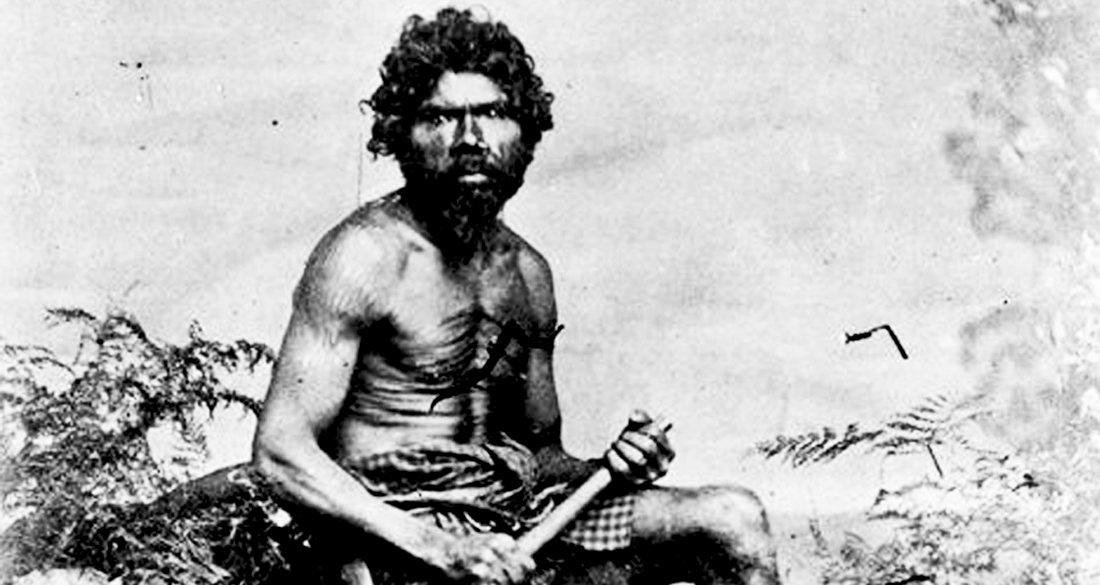
Many of the Aboriginal nations occasionally allied themselvestotheBritishsettlersinordertoconquer more land for their tribes, and just as quickly returnedtoastateofwaragainstthesettlers Itwas fought using mostly guerrilla warfare tactics; however,severalconventionalbattlesalsotookplace.
The engagement resulted in the defeat of the HawkesburyRiverandNepeanRiverIndigenousclans whoweresubsequentlydispossessedoftheirlands[4]
With the expansion of European settlement, large amounts of land was cleared for farming, which resultedinthedestructionofAboriginalfoodsources This,combinedwiththeintroduction ofnewdiseasessuchassmallpox, causedresentmentwithinthe Aboriginalclansagainstthesettlers andresultedinviolent confrontations,coordinatedbymen suchasPemulwuy.[5]
^ Macintyre, Stuart (1999) A Concise History of Australia Cambridge Concise Histories (First ed ) Cambridge: Cambridge University Press. ISBN 0 521 62577 7.
^ Connor, John (2002) The Australian frontier wars, 1788 1838 Sydney: UNSW Press ISBN 0 86840 756 9
^ Kohen, J. L. (2005). "Pemulwuy (c. 1750 1802)". Australian Dictionary of Biography Australian National University Retrieved 12 July 2009.
^ Wendy Lewis, Simon Balderstone and John Bowan (2006). Events That Shaped Australia New Holland ISBN 978 1 74110 492 9.
^ "Pemulwuy". Retrieved 6 May 2017.
H A W K E S B U R Y A B O R I G I N E S
J.C.L.F. in 'The Good Old Days.')The few who now remain, and who make their appearance annually at the Courthouse to receive the Queen's bounty in the shape of the customary blankets, is a miserable remnant of the once stalwart natives who roamed the banks of the Hawkesbury
The principal camp in this district was on a creek between Windsor and Riverstone, and the King who ruled the tribe was called King Creek Tommy.
This warrior wore a brass plate attached round this neck by a chain, bearing an inscription of his name and the name of the tribe over which he ruled. They were not a warlike tribe, but used frequently to come into town and hang around the pubs
There was another camp at Blacktown, and from the blacks this town derived its name A paternal Government, which robbed these unhappy beings of their land, afterwards gave to each member of any tribe who would work for it, grants of land.
At one time the greater portion of land in and around Blacktown belonged to aboriginals, and some of it is still held by half castes who are descendants of the tribe that once lived there Corroborees were of frequent occurrence. Once the local tribes issued a challenge to fight the Capertee blacks, and the two parties met for combat
11 May 1928.
The fight, however, was averted by the strategy of Sir John Jamieson's over seer, who, seeing that the tribes meant hostilities, had slain and suspended on the battlefield a useless old bullock.
On the arrival of the tribes next morning, they saw a feast awaiting them, and decided to bury the hatchet and eat, drink, and be merry
The meditated fight culminated in a corroboree, which lasted three days, over 300 blacks being present. Huge fires were lighted, and men and women almost nude, with faces and limbs painted, danced around the blaze, uttering all sorts, of wild gibberish.
Some of the females rushed about, pointing out their relatives to members of the other tribe, whilst others were, beating sacks, filled out tight with leaves, with sticks, and singing
There is but a remnant now left of the native tribe that once lorded it over the Hawkesbury. That there was a large tribe of blacks here at one time is well known, but with the advance of civilisation the race is surely becoming extinct.
The whole scene by the glare of the fire was wild and devilish, and not to be easily forgotten. The noise was deafening, whilst the facial contortions and gesticulations of the blacks would make the flesh creep. The wonderful dexterity of the aboriginals in the use of the spear, shield, and boomerang, was something remarkable. They could with the greatest ease turn off a spear with their shield, the weapon being hurled at them from short range; and, un less taken unawares, it would be impossible to spear them, so quick were they in protecting themselves in this way.
H A W K E S B U R Y A B O R I G I N E S
They were also very clever at climbing trees. Their method was to cut a small hole in the bark of the tree with their sharp stone axes Many of these implements have since been found in this locality whilst the ground was being ploughed.
They then ascended the tree in zig zag fashion, making holes, first on the righthand side, then on the left, and so on until the limbs were reached The whole of the weight of the body rested on the toes.
One way of cooking was to dig a long trench, clear it out flat, and line the bottom with boulders, on which a fire was made. When, the boulders became red hot, the embers would be cleaned out and a steak would be thrown on them, and in this way, they could turn out a very appetising meal.
Once, when I was partaking of their food, an oppossum was cooked The hair was first singed off; it was then opened and thrown on the boulders. After being cooked a piece of meat was handed me, which, for want of a plate, had to be eaten with the hands
The gins, who were squatted about, had their morsel thrown to them in much the same fashion that white men would throw meat to a dog, it not being aboriginal etiquette to hand their food to the womenw w w . a u s t r a l i a n s e t t l e r s . c o m
Some of the half castes in those days were very hospitable and I have often partaken of good meals with them, some of them having learned European cooking from families amongst whom they lived
I remember a very pious old black woman who had been brought up in Lieutenant Bell's family, and who, no doubt, had had her religious training attended to, for in fine weather, she could often be seen in Windsor sitting under a tree reading her Bible.
The blacks were never very troublesome about this district, and I don't remember any disturbances; this condition was different to that existing in Bathurst, where several outrages were committed
In later years, when the Government allowed the annual blanket, those who came to the Windsor Courthouse for it year by year became less and less numerous, until at the present time their number is very small indeed. When they first came for their blankets, I remember they numbered about 300 At first, they, used to sell the gifts to people for a small trifle or barter them to publicans for rum, but this was rightly put a stop to by the Government
In the use of the boomerang, they were particularly skilled, and could almost cut a man in two at one or two hundred yards with a sharp edged weapon, so great was the force with which they hurled it.
When a young man, I remember news came from the settlers that the Emu blacks were very troublesome and had been spearing the settlers' cattle; and the soldiers quartered at Windsor were sent in pursuit to what is now known, as Emu Plains, and caught some of the culprits red-handed, the spears sticking into some of the bullocks.
m
H A W K E S B U R Y A B O R I G I N E S
On another occasion, when I was travelling in the Bathurst district I used to go away droving I came across the remains of a burnt hut in the bush, and the charred re mains of three poor fellows who had been murdered by blacks
It afterwards transpired that these three men (settlers) had been attacked by the blacks, whom they had kept at bay for some time with their guns, until resorting to cunning, the blacks threw a firebrand on to the bark roof and set the hut on fire
Strange to say, the settlers stuck to their post, and would not come out, preferring rather to be roasted alive than to make an effort for freedom.
A few days afterwards, a publican who once lived in Windsor got a party of men together, armed with carbines and cutlasses, and set out in search of the hostile blacks, the king of whom was named after him.
They came upon the blacks after some days' search, and the king came forward asking for the blacks to be spared. 'Is that you? (Mentioning his name) said the publican, and receiving a reply in the affirmative, he rushed, with an oath, at the king, and cleaved his skull open with his cutlass
Report states that King Ebony ran several yards, with his skull cleft in twain, and then dropped dead.
The party then attacked the blacks, and a butchery ensued, none of them being spared, men, women and children being slaughtered to the number, of seventy. The massacre it could be, termed nothing else is a standing blot in Australian history
There is no need to mention the cleverness of the blacks as trackers, as their capacity for finding trails or tracks in the bush is well known, and even to this day they are employed for this purpose
I was droving up over the mountains when a young man, and, in endeavouring to get to a small township lost the track. Shortly afterwards I met an aboriginal who was well known to me and asked him to put me on the right track, telling him if he would go to the township with me,
I would give him a rupee a coin which would pass in those days and which I held in my hand and offered to him To show that they did not appreciate the value of money in those days and would rather have the equivalent in tobacco or spirits, Billy consented to conduct me to my destination on condition that he received some tobacco.
Having a little in my pocket I gave him a smoke or two and rewarded him when we arrived at the store Some of the early blacks made splendid workers and could do a day's toil in the wheat field that would make many a white man ashamed of his own work
Strange to say, many of those who became fairly educated and acquainted with European customs in after years were seized with nomadic habits again and went back to their tribe.
Notwithstanding the fact that no opposition to their capture was made by the blacks, the soldiers shot several of the poor wretches down, and when I went over the place a day or two afterwards, I counted seventeen of them lying dead within about four rods of ground.
y B o o m e r
WhenBungareewasKing
'Awake my muse! thyself infuse. The past to us to bring, to tell the ways of other days when Bungaree was king.'
Yes sir, that sable monarch was the last king of any moment, after the white man with his evangelizing in fluences of rum and tobacco, taught the children of the boomerang and spear the ways of Christian civilisation; and it must be admitted that they have been thinned out, as at a rough guess, there were in those days something like 100,000 blacks in New South Wales alone.
Now in about 100 years say from Goulburn to Sydney — they have been held very low in the scale of humanity. Too much so, I fancy, to be true.
For as mimics they were unrivalled Again, in throwing and tracking and in all other things displaying the gifts of sight, hearing, and quick observation of external nature they were unsurpassed Well, his sable majesty (Bungaree) had two queens one, I think, called Gooseberry, and the other Sugarbag.
They were of inestimable use to their dusky lord, in giving him full leisure to ponder on approaching changes. This was abundantly manifested when the royal party went on a fishing excursion for his majesty had a boat given to him, and he might have been seen on many occasions lounging smoking in his vessel while his two wives pulled the oars and caught the fish He always said he 'lubbed' that one best that caught most
Bungaree is also renowned for circumnavigating Australia with Matthew Flinders between 1801 and 1803

Nor should his 'make up' be forgotten. It consisted of an old cocked hat and coat that were once the property of an admiral; and as the weather was generally mild, these constituted the whole of his toilet Now, it must not be supposed that he was without any desire to notice the peculiarities of his betters.
In the time of Sir Thomas Brisbane, who was given to the study of astronomy, and could often be seen pointing his telescope heavenwards in quest of the deep mysteries there involved, Bungaree, to be quite up to the thing, got a hollow stick, and often, both day and night, might be noticed putting one end of the mimic telescope to his eye in perfect imitation of the Governor
When Sir George Gipps arrived Bungaree studied him, and soon copied to the life the new Governor's quick, short mode of address. So many of his old chums had to put up with, 'Oh, oh; how do? how do?' and, shaking his hand very quickly, 'Very busy, very busy can't stop to talk' instead of the lounging game of a few weeks before
Bungaree, in Macquarie's time, visited Government House, and dined there a few times, until his voracity in relation to rice puddings made it desirable to give his majesty a stipulated portion out side on the grass
By the way, it was not long since that Prince Timothy, eldest son of King Thackambau, of Fiji, did something of the same. But, to return to the other: Bungaree was a mild and peaceful man, wanting only food, tobacco and rum
The tribal feuds, which were always quickly settled, were generally over a woman. For that kind of bird, from the time of Hellen, of Troy, all grades of men, from kings to blackfellows, have been moved to heroics and absurd actions; and even Virgil states that the mild eyes of a heifer will wax with interest two fierce and strong bulls to goring each other to death to obtain a little of her gentle love.
Then, what are we to say to Darwin? or what to Pope? who has written 'We are but parts of one stupendous whole, whose body nature is and God the soul?' Bungaree, I may state, was King of the Port Jackson tribe, which, perhaps extended round Botany, to Cook's River and half way to Parramatta, or as I believe it should be 'Barramatta,' which means, in the native dialect, the place where eels are, for the saltwater eels used to go up as far as where the dam is now, to meet the fresh water stream, where it met the tide waters of the river, in search of anything that might come down. And the sable ruler, or king was Bimble Woy, a rum and tobacco disciple, of course.
But while on my black countrymen, I will take my readers back to the days of Governor Phillip, whose grave has so lately been discovered in England.
I may mention that the tribe inhabiting the country on the north side of the harbour, where the Cardinal's Palace now stands, was supposed by the tribes from a long way round, to contain men of great shrewdness and cunning; so much so that they tried to get their tribal doctors and rainmakers from there
perhaps it was a knowledge of this that induced Phillip to visit them and have a talk. With a boat's crew, including marines, he visited them The blacks were drawn up in one line, and the white men in another.
TheGovernorcommencedtoaddressthembysigns andwords perhapsbyanimperfectinterpreter whensuddenlyWoollooraming,ayoungblack,threw aspearathim,anditwentintohisbreastjustabove thecollarbone
Thenthewhitespresentedtofire,andtheblacks raisedtheirspears,when,withashout,another youngmannamedBennelongrushedbetweenthem, cryingout,asheheldhisarmsstretchedtothe utmost'Bailfire!Bailspear!'
Hethenmadethewhitesunderstandthatitwassome movementoftheGovernorthathadcaused Woollooramingtospearhim.Thisnobleactionno doubtsavedmanylivestheactionofamereboyof abouteighteenyears.Phillip,whowasnotmuchhurt, wasstrucksomuchwithadmirationofthedeedthat henamedthelocalityManlyBeach.AndIthinkitwas oneofthenoblestactswhichhistoryrecordsofany savageinanytimeSomuchthenforthegoodfameof myruinedandmuchmalignedblackbrothers.
Nearlytwentyyearsagotherewasamovementon foottochangethenameoftheplacetoNewBrighton, butIprotestedwithallthevigourIwasmasterof againstanychangeofthenamewhichrecordedsuch quickness,courage,anddevotioninayoungsavage MyletterappearedinoneoftheSydneydailypapers, andIheardnomoreofthesubject.
SomuchwasIimpressedwiththeoccurrencethatI haveforyearsbeentryingtoinduceartiststomakea greathistoricalpictureoftheeventfortheArtGallery
andthebestcopiesoftheblackscanbefoundin 'MajorMitchell'sExplorations,'inwhichfulljusticeis donetotheheadsofMozengully,Barnimanwoonga,
Due to Australia's extreme isolation, it was vital that a successful food supply be established and that fertile land with a fresh water supply be located swiftly, as the land surrounding the first settlement was not suitable for growing crops.
In March 1778, Phillip commenced exploring the surrounding countryside whilst approximately fifteen miles inland, he had a good view of the mountains.

One of these he named Richmond Hill, and he was certain "from the rising of these mountains that a large river would be found (1)
In June the following year, a party set out to locate the mountains, but the provisions only allowed the group to reach Prospect Hill, which at least was suitable for agricultural pursuits.
Governor Phillip was investigating the Broken Bay district when he sighted the Hawkesbury River and returned on a second expedition which explored the mouth of the Hawkesbury as far as Dangar Island, near the present day township of Brooklyn
expedition successfully travelled the length of the Hawkesbury River and reached as far as Wisemans Ferry.
On his return Phillip reported to Lord Sydney in England: "The river, which I named, Hawkesbury, after the Lord Hawkesbury...The breadth of this river is from three hundred to eight hundred feet...The soil of RichmondHill is good and it lays well for cultivation...The great advantages of so noble a river, when a settlement can be made on its banks, will be obvious to your Lordship". (2)
However, the explorers cautiously noted that debris located thirty feet up in the trees indicated that the river flooded, and Phillip suggested to Grenville that prior to settlement that it would be essential to be "better acquainted with the country".
Also "proper people to conduct it must be found" and the settlers would need "small craft to keep up communications". (3)
Sources:
. HRNSW, Vol. 1 part 2, p.133
HRNSW Vol 1 part 2, p 305
HRA Series I vol 1 , p 183
Following the settlement at Sydney Cove in 1788, Governor Arthur Phillip set out to make the penal colony self-sufficient, as quickly as possible.
 Leanne Mulgo Watson, Marri Badu Muru Big Water Path, Acrylic paint and ink on canvas, 2022
The Aboriginal name for the Hawkesbury River is Deerubbin, which is believed to mean 'wide, deep water'.
Leanne Mulgo Watson, Marri Badu Muru Big Water Path, Acrylic paint and ink on canvas, 2022
The Aboriginal name for the Hawkesbury River is Deerubbin, which is believed to mean 'wide, deep water'.
Stories from the river Dyarubbin is a series of 11 audio walks
stories
the river at the places where they happened: streamable from your mobile
at 11 public locations along Dyarubbin / the Hawkesbury River between Yarramundi and Sackville, or streamable from where you are.

original music, the audio walks share stories of the history of
first people, the Dharug, colonial contact, settlement and

floods
geology, ecology and sustainability, told by over 100 participants.

Still eager to find the potential farmland that had so far eluded him, Phillip returned to Port Jackson for provisions and immediately launched a third expedition, which reached as far west as the Colo River and Richmond Hill in July 1789. During these voyages, Captain John Hunter produced the first charts of the Hawkesbury.
HIn 1791, a search party, which included Governor Phillip, Watkin Tench and William Dawes, was exploring the Hawkesbury and Nepean rivers, which established that they were in fact the same river.

They met up with members of a local clan from around Richmond: Gombeeree, his son Yellomundee (or Yarramundi) and grandson Deeimba This early contact was recorded by Watkin Tench and he refers favourably to this meeting recording it with "friendship and good humour" (Sydney's first four years
Captain Watkin Tench p 233)
By 1794, settlement had begun on the western regions of the Hawkesbury in an area called the Green Hills. In 1810, Governor Macquarie toured the area and laid plans for five new towns
Windsor, Richmond, Castlereagh, Pitt Town and Wilberforce.
''From the rising of the mountains, I did not doubt that a large river would be found.'' Govenor Phillip. So spake Phillip he who served that land Whose standard proudly waves o'er every sea: Whose ships by bold and fearless seamen mann'd, Have left their mark on every foreign strand,Whose sailors fought to set the bondmen free, So spake he, when, like the fair Cybelle, He saw the hills and strove to reach their feet, And air, like song of birds, was pure and sweet. ''Then felt he like some watcher of the skies When a new planet swims into his ken,'' For as he gazed afar with wistful eyes, He felt that here a settlement might arise, And prove a home of happiness to men. He'd dreamed of such a place and dreamed again, And as he stood within the shadows gray, Again he dreamed that o'ver a boundless plain, Through vales and rugged gorges to the main
noble river rippled on its way.
Heart of the Hawkesbury
In the month of June, 1789, Governor Phillip undertook his second expedition to the vicinity of Broken Bay, arriving at Bay View on the 6th of that month.
Pushing forward on the following morning, he reached Brisbane Water, camping for the night at whatisnowcalledWoyWoy,examiningnextdaythe broad water at Gosford, ascending the Hawkesbury Riverthefollowingmorning(10thJune),andpitching theirtentsuponDangarIsland.
On12thJune,Phillipandhispartysetouttoexplore the upper reaches of the river, but after two days' pulling up stream they returned, their provisions beingalmostexhausted.
A fortnight after, Governor Phillip equipped another andalargerparty,andreachedtheultimatepointof thepreviousexpeditionon1stJuly1789,beingwithin a mile of the place afterwards known as Wiseman's Ferry,reachingearlythefollowingdaythejunctionof the Hawkesbury and Macdonald Rivers, where they campedatdusk.
The whole of the 4th of July, was spent in exploring along the Colo River and during the next day they pulledbacktothemainriver,upwhichtheytravelled 14milesbeforedark.
Proceeding next day, they reached more level country,passingthesiteofthepresentvillageofPitt TownandreachingthejunctionoftheGroseandthe Hawkesbury above Richmond on 6th July, when Governor Phillip decided to return to Port Jackson, namingthenobleriverhehaddiscoveredafterBaron Hawkesbury,presidentoftheBoardofTrade.
By William FreameIf Phillip had done so much regarding the discovery of the river, and Grose, Hunter, and King had pioneered the early settlement of persons upon its banks, Governor Phillip deserves credit for the foundation of proper towns in its vicinity, for he it was who founded Pitt Town, Wilberforce, Castlereagh, and to a large extent Windsor and Richmond. And until the boundless pasturage west of the Blue Mountains was discovered and settled upon, the Hawkesbury held pre eminence as the pastoral and agricultural district of the colony.
But it was many years before its agricultural importance became over clouded, and wheat had to give way through to the orchards and its cornfields
c o
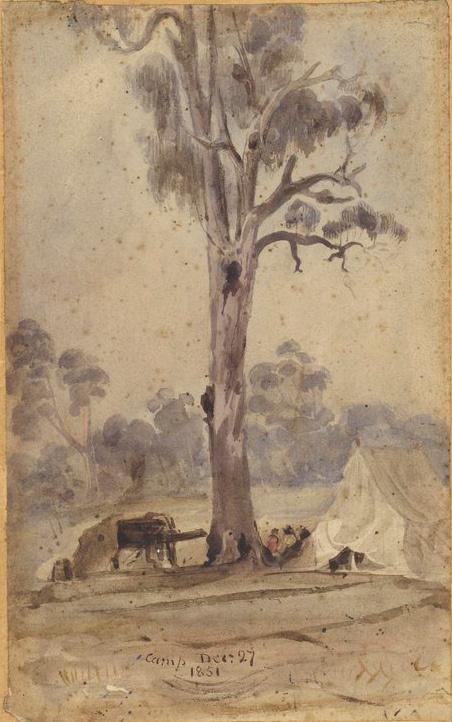
a u s t r a l i a n s e t t l e r s
w w w
Hawkesbury
AlthoughitwasPhillip'splan toeventuallylocateanew settlementontheHawkesbury, itwasLt.-Gov.MajorFrancis Grosethatinitiatedtheplan, afterPhillipreturnedto Englandin1792.
The new settlement on the Hawkesbury commenced inJanuary1794,byApril,actingGovernorGrosewrote to the Secretary of State for the Colonies, the Right Honourable Henry Dundas and reported that he had established 22 settlers on the Hawkesbury River, enclosed with his despatch was a plan of the settlement, drawn by our first surveyor, Baron AugustusTheodoreHarmanAlt
Thisplanshowsanumberoffarmsjoiningeachother betweenthevicinityofSouthCreekandthelowerend of Pitt Reach, with three farms a few miles lower downtheriver
Governor Grose failed to give details regarding the date when each party of settlers left for the Hawkesbury, who were in each company, and the name of the vessel that conveyed them to their destination.
DavidCollinsinhisinterestinghistorygives January1794asthemonthinwhichanother divisionofsettlersreachedtheHawkesbury, soitisreasonabletosupposethatthefirst divisionarrivedtowardstheendof1793.
Thenamesofthesettlersgivenonthe planwere: FirsttoarrivewasJames Ruse&CharlesWilliams.Followed byGilesMoore,DanielBarnett, WilliamPawson,JosephButler,John Howell,JamesWimbow,William Snailham,JohnAcres,William Douglas,JosephWright,JohnFenlow, PeterBond,JohnOwen,Edward Cunningham,RichardDavis,James Roberts,ThomasSaunders,James Webb,JosephWelsted& ThomasCaldwell.
Grose issued grants of 30 acres each on 3rd November 1794, in the "District of Mulgrave Place"
The report of Grose was very brief, and merely mentioned that the settlers were well satisfied with their farms. They had found the soil particularly rich, and their crops were growing with the greatest luxuriance.
Ruse and Williams were in the January party and chose for themselves land not too heavily timbered James Ruse was our first farmer, and Williams had lost his wife through a boating accident shortly before coming to the Hawkesbury
The vessel that transported them was probably the Rose Hill Packet. She was a small craft of about 10 tons, and no doubt could accommodate only a limited number of settlers and their stores at a trip. Some of them may have sent their stores by boat, then walked through the bush from Parramatta.
The first 22 known settlers had all served their seven years sentences.
GovenorPhillip wasakeen advocateoffree settlement. Hedidnot,like Macquarieatalater date,contendthatthe colonywasintended exclusivelyforconvicts, andthatfreepeoplehad norighttocometoitin thewordsofhis secretary,Judge AdvocateColonelDavid Collins,"Thesettler,to benefitthiscolony,the bona fidesettler,who shouldbeamanof someproperty,must comefromEngland. Heisnottobelooked foramongdischarged soldiers,shipwrecked seamen,orquondam convicts."


 By Geo. G. Reeve
By Geo. G. Reeve
Hawkesbury Pioneers
A broken waggon wheel that rots away be- side the river, A sunken grave that dimples on the bluff above the shale, The Currawong's call, the wind sweeps, the sweet couch grasses quiver, And sing a wistful song, of hoof and wind and sail.
Pioneers, pioneers, you moved along to glory, Across to Baulkham ridges to Hawkesbury's headland dim. Sydney Cove was then a night camp, old England was a story, Your new home, your true home, lay out beyond the rim.
You fretted at the old hearth, the kettle and the cricket, The father's little acres, the hay loft and the pond, Aye, better storm and famine, and the spear from out the thicket, Along the road to wider lands, that beckoned out beyond.
Pioneers, pioneers, you to forest lands fore gathered, On the rocky hills and thirsty plains that hardly, ever mattered, By grit you blazed the hard track, thence others followed, followed— With old faith— the great faith—of marching in the lead.
Your waggon track now laid with stone, your honoured dust is sleeping, Your spirit 'spires the valley where an Austral nation teems, Your soul has never left them, Ebenezer's vale is keeping Its children of the outward track, Their deeds are more than dreams.
Pioneers, pioneers, your children ne'er will reckon, The dangers on the old bush ways, no man had ever gone, They looked beyond the sunset with courage it did beckon, With old faith a bold faith to find a wider dawn.
From 'Ebenezer Pioneers of the Hawkesbury.'
H
Between 1797 and 1802, at least eleven women at Hawkesbury were granted their own title to land.
Eight of these were ex convicts
land holders, particular attention is paid to Sarah Cooley and John Stogdell, who were exceptional transportees. Stogdell developed an empire so vast that it influenced not just the dynamics of the Hawkesbury settlement,butalsothe18th centurySydneybusinessscene.
Their achievements stand
the fascinating glimpses of the daily lives of hundreds of the ordinary poor and ex convict Hawkesbury
families. The historically rich detail of the research in this book provides a new image of the Hawkesbury settlement ”
Of all the rich and gripping stories of what happened in the Sydney region after 1788, these are the most astonishing and the most poignant. It is time to shake off the idea that Sydney was a “white” city, that Aboriginal people simply faded out of thepictureandoffthe“stageofhistory”;itissimplyuntrue
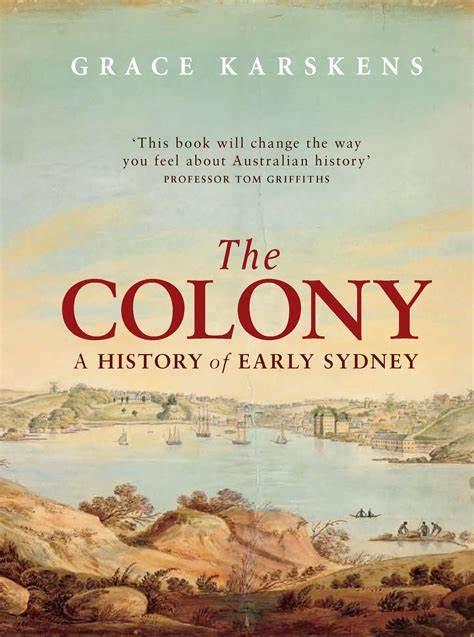
The time has come, too, to recognise that Aboriginal people became urban people very quickly.’ Karskens, The Colony, p.
26 whites have been killed along the banks of the Hawkesbury
Hawkesbury Settlement Revealed contains exciting new material about Australia’s beginnings, and in particular, about the third mainland settlement which grew at the River Hawkesbury. Barkley Jack, Jan ISBN: 9781877058882
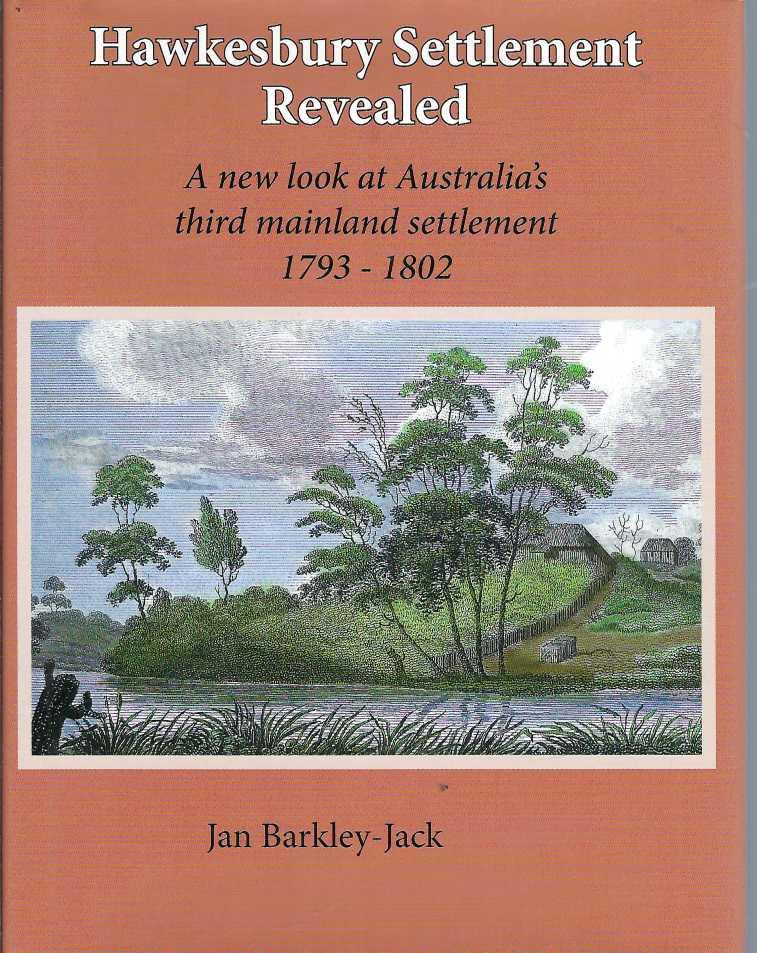
Grace Karskens is Professor of History at the University of New South Wales and a Fellow of the Australian Academy of the Humanities. She is the author of The Rocks, winner of the 1998 NSW Premier's History Award, and of People of the River. Allen & Unwin ISBN: 9781742373645
At
stage 60
are sent out “to destroy all Aboriginal people they can meet and drive them utterly from the Hawkesbury.”SomeestimatesputAboriginaldeathsat200.
Sometimes Koori children are taken after attacks on clan groups, ‘rescued’ by settlers and soldiers (they seldom become parentsinthecaringsense).
claim that the children are orphans whom they have rescued from the bush after their older relatives were killed. A generation of black children is growing up in white households. They are often treated as servants. Karskens, The
Wilberforce
James Webb
Thomas Saunders
James Roberts
Richard Davis
Edward Cunningham
John Owen
Peter Bond
John Fenlow
James Ruse
Giles Moore
The

Ebenezer
Situated on the banks of the Hawkesbury River, Ebenezer was settled by the British in 1803 and is home to Australia’s oldest church (1809) and school house (1810). Ebenezer was settled by a number of free settler families who sailed to Australia on the Coromandel in 1802.
Gronos Point
Thomas JCaldwell oseph WelstedPitt Town
This plan shows a number of farms joining each other between the vicinity of South Creek and the lower end of Pitt Reach, with three farms a few miles lower down the river.
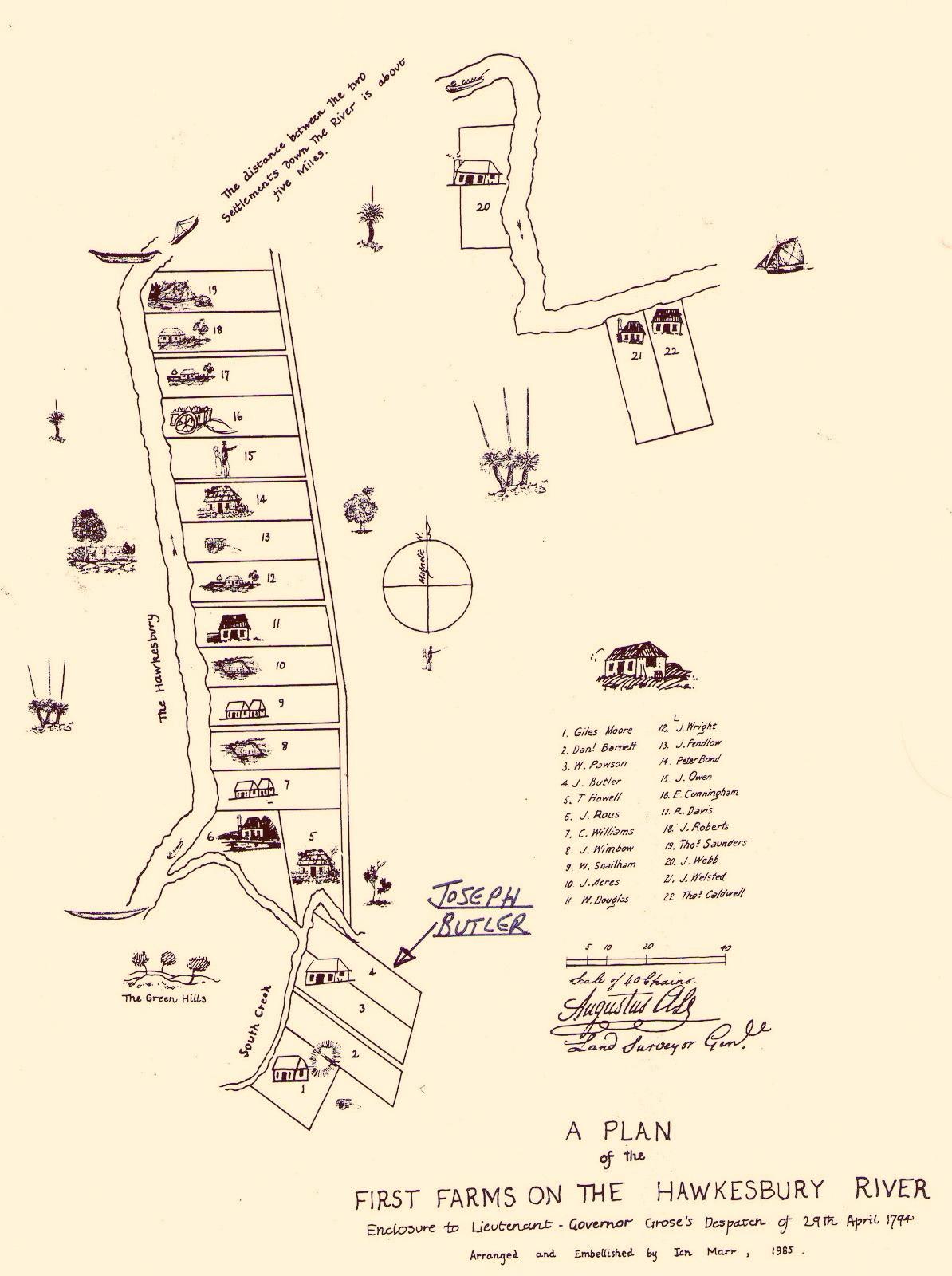
William Douglas
Joseph Wright John Acres
William Snailham
James Wimbow
Charles Williams
John Howell
Pitt Town Bottoms
Joseph Butler
William Pawson
Daniel Barnett
First Farm Settlers of the Hawkesbury River Enclosure to Lieutenant Governor Grose's Despatch of 29th April 1974.
Grose issued grants of 30 acres each on 3rd November 1794, in the "District of Mulgrave Place".
The distance between the two settlements down the Hawkesbury River is about five miles.Green Hills
Drafted from the original drawn by our first surveyor, Baron Augustus Theodore Harman Alt.
MackenzieCreekatthe junctionwithSouth CreekatPittTown BottomsWindsor
Hawkesbury Settlement
"Ihavesettledonthebanksofthe Hawkesburytwenty-twosettlers,who seemverymuchpleasedwiththeir farms.Theydescribethesoilas particularlyrich,andtheyinformme whatevertheyhaveplantedhasgrown inthegreatestluxuriance". (HRNSWVol.2,p.210)
ThemajorsettlementwaslocatedbetweenPittReach ontheHawkesburyRiverandSouthCreektributary. The rich fertile plains quickly produced crops which thecolonywasingreatneedof.Theaimoftheearly governors were to ensure that the colony became self supportingasquicklyaspossible Sydney and Parramatta produced a limited food supply, but it was the major contribution of the Hawkesbury that allowed the colony to stabilise, hencethetermusedtodescribetheHawkesbury,"the granaryofthecolony."
JamesRusewasthefirstAustralianfarmer Rusefirst settledatRoseHill,Parramatta,butthesoilbeingvery poorhesoldout,andwenttorichlandsonthebanks oftheHawkesbury,closetoWindsor,thenknownas theGreenHills
Ruse's remains lie in the Roman Catholic Cemetery, Campbelltown,overwhichisatombstoneuponwhich isaveryquaintinscription;thelatterportionofwhich readsasfollow: MyMotherrereadMeTenderley, WithMeSheTookMuchPaines; AndWhenIArrivedinThisColoney, ISowdTheFirstGrainAndNowWithMy HeavenlyFatherIHopeForEverToRemain.
Ithasbeencalled,withreason, thecradleofAustralia. FromtheHawkesburycamea largepartofthesuppliesfor theshipswhichcarriedthe tradeandenterpriseofSydney totheremotestcornersofthe SouthPacific. Itwasthefarmingofthe Hawkesburythatgavethesolid foundationforthesettlement ofNewSouthWales. Thedescendantsofthesettlers therehavespreadoverthe StateandovertheContinent. The following pages contain information on the 1793 1794 settlers to Mulgrave Place the Hawkesbury:Joseph Butler, Daniel Barnett, William Snailham, William Pawson, Joseph Wright, James Webb. William Douglas Thomas Saunders, Thomas Hoskinsson, & James Wimbow,
Joseph
JosephButlerwassentencedtodeathatthe February1786OldBaileysessionsforHighway Robbery.Hewassaidtobeoneofthreemenwho snatchedabundleofclothingfromafourteen year oldboyinNewBondSt.,nearCorkSt.,London. Nearlyayearlaterhissentencewascommutedto 7yrstransportation.HeembarkedontheConvict ShiptheNeptuneonthe23rdofDecember1789.
On 3 Nov 1794 Joseph's name appears on a list of all grants and leases registered at the Colonial Secretary'sOffice.
In the second year on the Hawkesbury River, Joseph hadafirethattookhishouseandstoreofcorn.Itwas possiblylitbyMary,thewifeofhisneighbourPawson. She had quarrelled with Mary Manderville, Joseph's wife
3June1820,MentionedinMemorialofhissonsJames andSilvester.
According to 1822 Convict and Settler's Muster living at Windsor, Convict, Free by Servitude, came by Neptune,alandholder.
3May1824,nameappearsonapetitionregardingthe useofCommonLandatWollombi,alongwithbothof his sons and a number of other settlers such as W. Sternbeck
According to 1825 Convict and Settler's Muster
Lower Reach, Hawkesbury. Also living with him is MaryHollandaconvictarrivingontheIndispensable, hisformerpartner.
Recaptured,hewassenttotheDunkirkhulkinJune
Hawkesbury,
with Mary Holland who is classifiedashisservant.
JosephButler2ndFleetConvict1762
On 16 June 1793 Barnett married Ann Baker at Parramatta. A year later he received a 30-acre grantoflandatMulgravePlace.
1maleand8femalehogs.
Hewaslivingwithamalechildbutnot,itseems, his wife. He was still with his son on 15 acres of landatPittTownin1822.
Danieldiedon15February1823;hisagewasgiven as68.
N e w S e t t l e
William
twice in successive trials which began 21 Apr 1784, once for burglary at the house of Thomas Jackson and the other for burglary at the house of Thomas Goodrick. He was transported aboard the ship 'Scarborough' after being sentenced to seven years transportation HearrivedinSydneyin1788aboardtheScarborough as part of the First Fleet He married Elizabeth Gore on 17 Feb 1788 at St Philips in Sydney, New South Wales.Theyhadthreechildrenduringtheirmarriage Williamb 1788,Annb 1791andCharloetteb1794
1794 he was granted 30-acres of land at Mulgrave Place. He died as a young father in 1796 in Sydney, New South Wales, at the age of 27, the grant of land wasissuedtoElizabethinherownright By 1800 the land had been purchased by Lieutenant AnthonyFennKemp.

Pawson was a known Yeoman and arrived in the colony in 1789 aboard the SurprizeandshortlyaftermarriedMarySmith in1792inParramatta,NewSou Williamreceiveda30-acreland grantatMulgravePlace
Williamand Mary appeared to have remained together, although the Pawson name disappeared from the region, suggestingtheywerechildless
Joseph
JosephwasborninChelsea, Londonin1767toJosephand ElizabethWright.Littleis knownaboutJosephJuniorin 18thcenturyEngland,buthe mayhavebeenatrainee blacksmithorsimilar.
In 1784, when Joseph was 17 years old, while walking in SloaneSquare,Chelsea,henoticedsomerenovationsbeing doneinSloaneStreet
He decided to help himself to the lead flashing around the dormer windows and took it home with the idea of advertising and selling it. Unfortunately, he made one trip too many back to the house on 6th May, 1784 (bad choice) andwascaughtcomingfromthebuildingwiththreepieces of lead in a basket along with another man who had a knapsackonhisbackwithsomeleadtoo
Thismantookoff,butJosephwascaughtandtakentothe publickhouse(policestation)byJohnDandy.Theleadwas takenbacktothehousewhereitmatchedexactlytheplace whereithadbeencutfromtheroof
Josephwaschargedwithstealing218lbsofleadtothevalue of 40 shillings After nearly three weeks behind bars, in London’s Central Criminal Court (The Old Bailey) on 26th May1784,Josephwastriedandfoundguiltyoftheft,withthe testimonyofthreewitnesses,WilliamRothwell,theowner, John Dandy the arresting officer and Ruben Jackson, the plumber, who matched the lead to the house. (Old Bailey reference no t17840526 21) He was sentenced to 7 years transportation
As the jails in London were overcrowded, he was transferred to a hulk on the Thames, the Censor TransportationtoAfricawasconsidered,butitwasdecided that it would be too hot and also water supplies were not suitable
Meanwhile, Joseph and other convicts were taken ashore during the day in working parties and returned to confinementonboardatnight.Hewastospend3yearsin thesedeplorableconditions
Fellowship Of First Fleeters (www.fellowshipfirstfleeters.org.au)
Finally, in 1787, a decision was made to set up a colony in Botany Bay, Australia, discovered by Captain Cook in 1770
After 3 years on the Censor, finally on 24th February 1787, Joseph was dispatched by open wagon for the three day journeytoPortsmouthinthebittercold
HeboardedtheScarboroughon27thFebruary1787,oneof11 ships making up the First Fleet. Scarborough had been convertedtoaconvicttransportfullyrigged,three masted ship,withtwodecks,weighing430tons
Theshipwas111ftlongand30ftwideShecarriedacrewof 30andonboardwerealso50marinesand201convictsand was under the command of her Master, John Marshall Joseph was listed as convict 96 when he boarded the Scarborough
As with all others the amount of clothing estimated for a convict for one year was: 2 Jackets, 4 Woollen Drawers, 1 Hat,3Shirts,4pairsWorstedStockings,3Frocks,3Trousers and 3 Pairs Shoes Inventories of the time also listed the provisionfortwoyears.
ThefleetfinallydepartedfromPortsmouthon13thMay1787 forthe8monthsand1weekvoyageunderthecommandof Captain Arthur Phillip The fleet called at Tenerife in the CanaryIslands,RiodeJaniero,BrazilandtheCapeofGood HopeinwhatisnowSouthAfrica
TherewasamutinyonScarboroughfivedaysafterleaving EnglandbutfortunatelyJosephwasnotpartofit Thering leaderswerecaughtandtransferredtotheSirius,given24 lashes and places in double irons for the remainder of the voyage.
ThefleetreachedBotanyBayon18thJanuary,1788,butthis site was found to be unsuitable, so the fleet moved north
the coast to
Jackson and anchored at Sydney Cove.
e m e n t
e w S e t t
Joseph
EleanorGottwasaSecondFleeter, sheembarkedonthe2ndFleetship, NeptuneboundforSydneyCove. Theharshnessanddepravityofthis voyageiswelldocumented,andit wasknownasthehellship.
Poor Ellen, then 25 years old, survived while many others didnot.Wecanonlyimaginethesufferings,privationsand abusesheandothersendured Outofthe499boarded,158 diedduringthevoyage
ShearrivedatSydneyCoveon27thJune1790after159days at sea After taking some time to recuperate in the colony thathadlittlefood,Ellenfinallysettledinandthereshemet JosephWright.
Itprobablywasn’tawhirlwindromance,buttheyseemedto hit it off pretty well So much so, that they were given permission by Governor Arthur Phillip to marry on 13th December1790atSt.PhillipsChurch,Sydney.
The original wedding book and certificate used in the new colony shows a large signature by Ellen Gott and a cross from Joseph Wright. The ceremony was witnessed by EdwardFieldandMatildaProudbothofwhomsignedwitha cross Ellen was 25 and Joseph was 23 They spent their honeymooninSydneytown,probablyDarlingPoint,where theylivedtill1794
Joseph and Ellen’s first child, Joseph, was born at Port Jacksonon11thFebruary1792 Thesecondchild,Robert,was bornon15thJune1794andbaptisedatSt.Johns,Parramatta threeweekslateron6thJuly
In1794,nowfreebyservitude,Josephwasgivenagrantof30 acres of land at Mulgrave Place on the Hawkesbury River. Heislistedamongthefirst22settlerstoreceivelandgrants Records show his land as being 30 acres, with 125 acres underwheatandmaizeandrunning6hogs.
The early settlers suffered great hardship battling floods, unreliable transport and a lack of roads. The rent was to be one shilling per year with payment commencing after ten years.
JosephandEllen’sneighbourswere
WilliamandMaryDouglasonone sideandJohnFenlowontheother side.
TheDouglaseswerecongenial neighbours,goodfamilypeoplelike theWrights.Laterintermarriageof theirfamiliesandalsowiththe nearbyButlers,wouldcementthis earlyassociationontheriver.John Fenlowhoweverwasdifferent,a wildyoungbachelor. InJuly,1796,JohnMalloy,ourfirstGeneralPractitioner,was calledupontogivemedicalevidenceinamurdercaseatthe settlement on the banks of the Hawkesbury River at MulgravePlace JohnFenlow,JosephandEllen’sneighbour, hadshothisservant,JohnLaneusingabulletthoughttobe anold1ozleadweight.
An interesting point was raised that Joseph, convicted of stealingleadinLondon,maystillhavebeenintheunofficial scrapmetalbusiness.
There was some speculation only, that Joseph made the bullet,whichwasusedtokillJohnLane,butthiswasnever proved WhenJohnFenlowwasconvicted,anotherconvict, ThomasGilberthorpetookoverFenlow’slandgrantandhis wifeandEllenbecamefriendsduetotheirmutualCatholic faith.
Later on, Joseph found out that Thomas and his wife were harbouring a runaway, George Bruce, so he felt he should reportthemattertotheauthorities Ellenthenquicklytold herfriendwhatherJoewasupto.
Theirthirdchild,Mary,wasborn,circa1797,andthefourth child, John, about 1800 By mid 1800 Joseph owned 9 pigs and had 13 acres sown in wheat and another 13 ready for planting maize. Their family had now increased to four children and they were still supported from government stores.
N e w S e t t l e m e n t
Joseph
BythistimethelongvoyagetoAustralia andtherigoursoffarmingwerestarting toaffectJoseph’shealth.Hefoundhe couldn’tcontinuetorunhisfarmalone andwasforcedtosell.Thefamilymoved toProspectwhereJosephwasemployed onafarmownedbyEdwardShipley. Theirfifthchild,Sarah,wasbornthere onthe12thMarch,1802. This move to Prospect, however, was short lived and the familymovedbacktotheHawkesburyareaandpurchaseda smaller tract of land, 15 acres, from Owen Cavanaugh The next farm returns indicate that Joseph had sown 8 acres withgrain,leaving6acresfallow Halfanacrewaspasture andtherewasanorchardof07ofanacre Henowowned7 hogsandheldabushelofmaizesowasnolongersupported fromgovernmentstores
In 1803, Joseph and Ellen suffered the loss of their wheat crop.Itwasruinedwhentheboatcarryinghisproducewas swampedintransitdowntheriverandthewholecropwas lost Herequestedcompensationbutwasdenied
Joseph and Ellen’s sixth child, Samuel was born on 25th December 1805 Early the next year, Joseph was convicted, along with three other settlers, of employing an escapee, ThomasDesmond,whohadabscondedfrompubliclabour Theothersettlerswereeachfined3poundsandJoseph20 pounds, to be paid to the Orphan’s Home. However, the Judge was lenient with Joseph and halved his fine to 10 pounds
Thelandgranthehadpurchasedwaslowlyingandproneto flooding. In 1806 and again in 1809, the area suffered extensive flooding and all his crops were destroyed In the midst of these calamities their seventh child, Thomas was bornon12thMarch1809 Hereplantedhislandwithwheat andbarley
His health was now declining, and he found it almost impossible to harvest his crop himself. In 1810, he tried to getassistancefromotherfarmersbutcouldn’taffordtheir exorbitant rates He then wrote to Governor Macquarie to ask for some assistance to get his crop harvested, but his requestwasdenied Althoughthereisnorecordofhissons, Joseph Junior 18 years old and Robert, 16 years old, they probablyassistedtheirfathertobringthecropin
Joseph’shealthcontinuedtodeteriorate(althoughhisillness isunknown)andsadlyhepassedawayon30thAugust1811at Pitt Town He was 44 years old A service was held at St Philips, Sydney, where he was described as a native of LondonandburiedatTownHallCemetery,Sydney (Burial CertificateNo256Vol:5)
Joseph had left the deeds to his property to Ellen and althoughsheownedthefarmnow,shealsohad7childrento look after and support Joseph, now 19, Robert 17, Mary 14, John11,Sarah9,Samuel5,Thomas2.Althoughthereseems to be some doubts regarding the dates, all of Ellen and Joseph’s children were baptised in churches at St Philips, Sydney,St.Johns,Parramatta,andSt.Matthews,Windsor.
It seems Eleanor was bought up in the Catholic faith as a child and continued to worship in the local churches with her husband and children. Their marriage lasted 21 years, probablybeinglike mindedintheirfaithandloveforeach other
On 31st March 1812, Ellen married Daniel Buckridge at St Matthews, Windsor. They lived together on Ellen’s farm at PittTownandrecordsshowtheywerestilltogetherin1828 There seems to be some evidence that Daniel had been grantedalandgrantof50acresatCastleHillin1818butthis cannotbeverified
Ellen’s 2nd marriage to Daniel Buckridge seems to have beenasuccessandheshouldbegivenagreatdealofcredit for adopting all of Ellen’s children as he had no children with Ellen He helped her sons to have trades as Wheelwright, Blacksmith, Cooper and Shoemaker. Daniel waslaidtoreston18thJune1834andaheadstonemarkshis graveinthePittTownCemetery
Now 69 years old, Ellen continued to live on her farm for another 9 years but there seems to be no record of those years On28thApril,1843,Ellen(Eleanor)Buckridge(Wright) (Gott)passedawayaged78years.Sheisburiedwithher2nd husband,DanielatPittTownCemetery
To have found out in my lifetime that Joseph and Ellen Wright helped to pioneer this great land of Australia and thattheywereactuallymyfamilymakesmeveryhonoured yethumbledindeed
Thefactthattheylivedto44and78yearsoldaftersuffering unimaginable hardships has helped me understand how Australiabecomethegreatcountry,wecallourowntoday.I amproudtocallthemmyNanaandPa Narrativeprepared by#7989GrahamSparks,4thGreatGrandson.
Fellowship Of First Fleeters (www.fellowshipfirstfleeters.org.au)
Joseph
James Webb, a ship builder on the Hawkesbury River, in 1797 sails a new boat with his crew to Sydney with a load of corn.
They are drifting peacefully down the river when they come upon a party of natives who were friendly and unarmed in their canoes.
The natives board the boat, and begin inspecting the rigging and masts James Webb watches suspiciously and calls one of his crewmen to position himself near the muskets and shoot.
Webb and his mate fire point blank at the Aboriginal men Four are shot and the rest jump into their canoes and paddle away out of range of the guns. The native bodies are pushed overboard. Source: (Swancott 1967, p 25)
n 1822 he was said to be living at ‘Lower Branch’ when he sought permission to launch a vessel of 15 tons
He was the first European settler at Brisbane Water, where in 1823 he was granted a temporary right to occupy land
Webbs Creek is a small tributary which flows into the Hawkesbury River to the west of the town of Wisemans Ferry, New South Wales. The locality was named after James Webb who was granted 350 acres being Portion 18 Parish of Wonga County of Hunter in the 1830s.
Surveyor Felton Matthew’s survey map of 1833 34 shows James Webb owned 530 acres on the western shore of Webb’s Creek at its confluence with the Hawkesbury River.
William Dougls
The'Alexander'leftPortsmouth,Englandon the13thofMay1787.Teneriffewasthefirst portwheretheshipsofthefirstfleetlayed anchorontheirjourneytoNewSouth Wales.TheAlexanderdroppedanchoron the21stofJanuary1788atBotanyBay.
Mary was also a convict. Charged by the oath of Edward Copper with feloniously stealing one yellow canvasbag,thirteenguineasingoldandeightshillings and sixpence in silver, the property of the said Edward Cooper. Committed by Benjamin Bromhead, Esq. April 14th. Then and there being feloniously did wrongfully act against the peace of our Sovereign GeorgeCrownandDignity.
MaryGroveswastriedonTuesdaythe9thofJuly1785 atLincoln,shewaschargedwithstealing"oneyellow canvasbagcontaining13guineasandsomesilver,the property of Edward Cooper". Mary was found guilty andwassentencedtotransportationforsevenyears Shehadnooccupationrecorded.
The 'Prince of Wales' sailed from Portsmouth, England, with Mary Groves on board on Sunday the 13thofMay1787.Shewasaboutthirtyyearsoldwhen she arrived at Sydney Cove on Saturday the 25th of January1788
On Sunday 1st June 1788 Mary Groves and William Douglas were married, with the consent of Arthur Phillip, Governor, by the colony's Chaplain Reverend Johnson, at St Phillip's Church of England, Sydney Cove, Port Jackson William Rowe and Stephen Barneswitnessedtheirmarriagewhichwasoneofthe firstJuneweddingsinAustralia.
On Saturday the 18th of December 1789, William Douglas, William Bradbury and Jeremiah Leary were chargedwithassaultingtwoseamanfromthesupply ship 'Braydon and Storey'. Magistrates, Captain Collins,ReverendJohnsonandMrAltfoundthethree menguilty.BothWilliam'swerecommittedtoworkin aconvictgang,Leay(Leary)wasreprimanded
1806,
30 acres of land
1801
Mulgrave
Sydney
are
the 1796 baptism of their
himself, a wife (Sarah Dailey), and two
William and Mary Douglas's daughter, the other thedaughterofSarahDailey).Douglasmovedback
to Sydney where, in 1807, he was a witness at his stepdaughter's wedding Sarah Dailey disappears from the recordsaroundthistime.
was living with Eleanor Carthorne The 1828 Census
him living with his son in law Daniel Jurd at Pitt Townandoperatingasabutcher WilliamDouglasdiedon
N e w S e t t l e m e n t
Thomas Saunders
Triedandconvictedon12thMarch 1787attheChelmsford,Essexforthe theftofapigvaluedat40shillings, sentencedto7yearstransportation.
Served 4 years on the Prison Hulk ‘Lion’ which was mooredinPortsmouthHarbour.LeavingPortsmouth on 27th March 1791 aboard the convict ship the ‘Matilda’, which sailed with 230 male convicts on board of which 25 died during the voyage The ship arrivedon1stAugust1791
ThomasSaunders,aged22,describedasalabourerof Walthamstow was charged with stealing a sow pig, valuedat40shillings,thepropertyofGeorgeMitchell ThetheftoccurredatEssexon27thJuly1786.Hestood trial at the Essex Lent Assizes at Chelmsford on 12th March 1787 and was sentenced to seven years transportation.
Serving the first years of his sentence on the prison hulk “Lion” moored in Portsmouth Harbour, he was eventually transported on the convict transport “Matilda”, a ship of 480 tons, Captain Matthew Weatherhead, which departed Portsmouth on 27th March1791andarrivedPortJacksonon1stAugustthe sameyear
In1794,hissentencecompletedandnowafreeman, ThomasSaunderswasgranted30acresonthesouth bank of the Hawkesbury River near Pitt Town, New SouthWales,whereheestablishedasmallfarm.
TwoyearslaterThomasSaundersofHawkesburyand Mary Bouchier of Parramatta were married at St John’s Church, Parramatta, by Rev Samuel Marsden, they had 7 children between 1797 1812. Thomas made hismarkwhileMarysignedhernamewithaflourish, indicatingthatshehadsomeeducation.
While Thomas and Mary experienced all the ups and downsoffarmingintheearlydaysofthecolony,they generally prospered and eventually extended their intereststoincludeseveralotherpropertiesaswellas abakeryattheRocks,Sydney
By Phil HandsInthe1805Muster,ThomasSaunderswasrecordedas a settler on 30 acres at the Hawkesbury He had 23 acres planted with wheat, 3 acres maize, 2 acres barley, 1/4 acre peas and beans, 1 acre orchard and gardensand3/4acreofpastures Heownedoneboar pigandonesowpigand40bushelsofwheatwereon hand.He,hiswifeandfourchildrenwere‘offstores’, and he employed three free men and two ticket of leaveconvicts.
MaryBouchier,abanquetcook,wastried attheOldBaileyon19thFebruary1794.
Shewaschargedwithstealingsomesilver spoonsandotheritemsfromanemployer, Mrs.PeterBoileau.Marypleadednot guiltyandclaimedthattheitemshadbeen giventoherinabundleofclothingto mindforanotherservant,AnnGoostry.
Mary’sstorywasnotbelieved,andshewassentenced to death and sent to Newgate Prison. Five months later Mary was offered clemency provided she was preparedtoaccepttransportationtoNewSouthWales fortherestofherlife.
Mary accepted and was transported as one of 133 female convicts on the “Indispensible”, a ship of 351 tons,underCaptainWilkinson,whicharrivedatPort Jacksonon30thApril1796,afteravoyageofaboutsix months
Theyhadtwodaughtersduringtheirmarriage. Virginiab.1801andElizabethb.1808.
VirginiaSandersmarriedJohnTebbutton4 July1831inParramatta,NewSouthWales. WhilstElizabethwentontomarryWilliam Tarlington.
AustralianSettlersMagazinewillbringyouthe storiesofJohnTebbuttandWilliamTarlington inourFebruary2023EditionNo.7.
Thomas Hoskinsson
ItisnotknownjusthowThomas HoskissonenteredAustraliaand varioustheoriesincludingthatof ThomasHodgettshavebeen advancedovertime,butallhave sinceprovedtobeincorrect.
Thomas married Sarah Pigg at St Phillips Church of Englandon30January1795andtheysettledonasmall land grant on the Hawkesbury River, which Thomas hadbeengrantedonobtaininghisticketofleave
It is known that he was killed by aborigines and left Sarahwithayoungfamilyoftwochildrenandatthat stage expecting the birth of the third The actual circumstances of his death are unclear, but the following information is believed to be close to the truth
Bythespringof1799ThomasandSarahwerefarming a small property near Green Hills and were the employersofconvictlabour Aboriginalvisitorstothefarmwerereputed tobetreatedkindlybutnodoubtthe Hoskissoncornfieldswereruledtobeoutof bounds.Notrealisingthattogoshooting kangarooswasacomparableviolationof rights,Hoskissonandhiscompanion Wimbow,onreachingthesecondridgeofthe mountains,weresavagelydonetodeath.
The corpses when found were dreadfully mutilated The burial party of soldiers and settlers had Hobby's (theleaderofthesearchingparty)orderstoshooton sight,buttheymetnonatives.
Thereislittledoubtthatbothofthesearemistakesand refer to Thomas Hoskisson and his companion Wimbow Itisalsoworthnotingthatinthe1828Census Thomas's descendants are referred to as Hoskinson. Thisistypicalofthetimesduetothepooreducationof someofthepeoplecarryingouttheCensus.
"Clifton"
the Cornwallis
Windsor.
in Windsor
very active in the Hawkesbury Benevolent Societyandwasoneofthelargestshareholdersinthe RichmondBridgeCompanyandloanedmoneyforthe constructionofthefirstbridgeovertheHawkesbury, withoutanysecurityfortheloan.
"Clifton" property passed to his youngest son Samuel
was used as a stud farm for cattle and
for the next 100 years, whilst remaining in the ownershipofthefamily.Todaythepropertyisthesiteofthe RichmondRAAF Base
JamesWimbow
James Wimbow was convicted for highway robbery and sentence for execution, some months later he was destined to Australia for 7 years aboard the Ship: Scarborough. Departing in December 1789 and arriving in Sydney Cove on the 26th of June 1790.
With good conduct, James received his ticket of leave and on 15 February Caesar was shot by John Wimbow at Liberty Plains (Strathfield) and died after being carried to Thomas Rose's hut.
By 1794 he had a 30 acre grant of land at Mulgrave Place, the Hawkesbury.
Yellowgowey [Yaragowhy], a Hawkesbury
Aboriginal leader, claims that an Aboriginal man named Major White killed Hodgkinson and John Wimbow. (Hunter to Portland, 2 February 1800, HRA Ser 1, Vol. 11:411 12.)

Caesar’s death is recorded by Collins in February 1796.
“On the 15th,” he says, “a criminal court had met for the trial of two prisoners for a burglary, when information was received that Black Caesar had that morningbeenshotbyoneWimbow
This man and another, allured by the reward, had beenforsomedaysinquestofhim.Findinghishaunt, they concealed themselves all night at the edge of a bush,whichtheyhadperceivedhimenterinthedusk oftheevening.
Inthemorninghecameout;when,lookingroundhim and seeing his danger, he presented his musket; but before he could pull the trigger Wimbow fired and shot him, and he died in a few hours Thus ended a man who certainly during his life Could never have been estimated at more than one remove above the brute,andwhohadgivenmoretroublethananyother convictinthesettlement.”
George Barrington’s version almost seems to have been “cribbed” from Collins but gives a little more detail.
“They took him,” he says, “to the hut of Rose, a settler at Liberty Plains, and he expired in a few hours.” The Bengal rum had done its deadly work.
But nothing can dim Caesar’s fame as Australia’s pioneerbushranger Theverynameoftheprofession, infact,wascoinedinhishonour
Grace Karskens
War,friendshipandrevenge oftentwistedtogetheronthe frontier.Inthefoothillsofthe BlueMountainsin1799,
Aboriginal warriors killed two Hawkesbury settler men, Thomas Hoskisson and James Wimbow, while they were out on a hunting trip together Hoskisson had always been on good terms with the Aboriginal people,butWimbowhadtakenthedaughterofoneof thewarriorstolivewithhim Inretributionfortheir deaths, settlers at the Green Hills (later Windsor) killed two adolescent Aboriginal boys, Jemmy and LittleGeorge
Theseboyswerewell knownamongthesettlers,who had probably seen them grow up. The term ‘boy’, is misleading, for although they were only aged 16 or younger, they had been initiated and were therefore warriors (1)
Before the killings three Aboriginal boys, including the two victims, had approached James Metcalfe (Metcalf) as he worked on a farm, who invited them into the house One of the boys, ‘the biggest of the three’pickedupMetcalfe’sjacket,whichwaslyingon the ground, and put it on before he followed the othersintothehouse Itmusthavehunglooseonthe slimyoungframe,becauseonceinside,hewasseized, thecoatwasimmediatelypulledoff,andatomahawk wasfoundhiddeninthesleeve.
Whatfollowedwasasortofroughtrial,withmoreand more angry settlers arriving to interrogate the boys onthemurdersofthesettlermen.Oneboyescaped, but the other two were bound, taken to a barn, and shot and stabbed to death Their bodies were later found, and the killers were arrested and tried for murder (2)
Whydidtheoldestboyputthejacketon?
Theaccusedwhitemeninsisteditwasto hidetheweaponinthesleeveand thereforebespokehisviolentintentions. Buttheboys,likeallwarriors,were openlyarmedanyway,withspearsand womeras.Thesewerealsotakenfrom them.Puttingonthecoatmayhavebeen aritualisticgesture:tomeetwithwhite men,awarriorputononeoftheircoats, asasignof…what?Politeness?
Amimesiswhichwasa‘customaryformof respect’inthismosturgentanddangerous ofsituations?Anacknowledgementofthe seriousnessoftheboys’predicament?
ThefactthatitwasMetcalf’scoatsuggeststheywere claiming a sort of allegiance with him. The boys clearly knew him well, and, indeed, he was the only one in the room that night who spoke up against killingthem,whiletherestbayedforblood
ButneitherMetcalfenorhiscoatcouldprotectthem from the terrible act that followed, any more than Hoskisson’s gifts to his Aboriginal friends had protectedhim
Thecoatwasstrippedoffassoonastheboyentered the room, suggesting that the settlers, too, knew its meaningandintent,andwouldhavenoneofit Itwasasifthesharedunderstandings, objectsandritualswhichhadgrown betweenthetwogroupshadtobe strippedawayforthiskindoffrontier
In October 1799 he was one of four emancipist farmers and a free constable (Edward Powell) who were tried at Sydney for the brutal murder of two teenage Aboriginal boys at the Hawkesbury.
Theboys,knownasJemmy,aged15,andLittleGeorge, aged11livedamongthesettlers,andweremembersof a tribal group, several of whom had recently murderedanddismemberedtwolocalwhitemen(one ofthemJohnWimbow).
Sion (Simon) Freebody and the other men were among a party of angry settlers who captured the boys as they were visiting a neighbouring farmer returning one of the dead men’s muskets.
ThecourtatSydneyfoundthemguiltyofthemurders, and that the Aboriginal boys had been innocent of involvement in the murder of the white men, an AboriginalmannamedMajorWhitekilledHodgkinson and John Wimbow. (Hunter to Portland, 2 February 1800,HRASer1,Vol 11:411 12)
They are found guilty, but released on the grounds that their farms are in danger of being destroyed (JLKohen, The Darug and their Neighbours, Darug Link,1993,p 63;seealsoHuntertoDukeofPortland,2 January1800,HRNSWVol.1V:2 3;HRA1,Vol11:401 3; Minutes of Proceedings, X905, pp 323, 329 362, SRNSW; Rex v Powell and others, Court of Criminal Judicature, 15 16 October 1799, Decisions of the SuperiorCourtsofNewSouthWales,1788 1899).
The court released them on good behaviour bonds and referred a decision on their punishment to the HomeSecretaryinEngland,whoorderedthemento bepardoned
Crueltyonthepartofthewhitesettlers.
Collinsthusspeaksoftheactivityofthenativesinactsof reprisal:Whenspokento,orcensured,forrobbingthe maize grounds, these people, to be revenged, were accustomedtoassemblinginlargebodies,andburnthe housesofthesettlersiftheystoodinlonelysituations, frequentlyattemptingtotakelife;yettheywereseldom refusedalittlecorniftheywouldaskforit
Itwasimaginedthattheywerestimulatedtothisdestructive conductbysomerunawayconvictswhowereknowntobe among them at the time of their committing these depredationsInordertogetpossessionofthesepests,a proclamationwasissued,callinguponthembynameto deliverthemselvesuplawsiftheyrefused;andrequiringthe inhabitantsastheyvaluedthepeaceandgoodorderofthe settlement, and their own security, to assist in apprehendingandbringingthemtojustice
TheGovernoralsosignifiedhisdetermination,ifanyofthe nativesweretakenintheactofrobbingthesettlers,tohang theminchainsnearthespotasawarningtoothers
Couldithavebeenforeseenthatthiswastheirnatural temper,itwouldhavebeenwisertohavekeptthemata distance,andinfear;whichmighthavebeenaffected withoutsomuchofthatseveritywhichtheirconducthad sometimescausedtobeexorcisedtowardsthem
Butthekindnesswhichhadbeenshowntothem,andthe familiarintercoursewithwhitepeopleinwhichtheyhad beenindulged,tendedonlytomakethemacquaintedwith thoseconcernsinwhichtheywerethemostvulnerable,and broughtonalltheevilsthattheysufferedfromthem.
sodisastroustothepoorwretcheswhodoubtlessthoughtthat theywereonlyactingwithintheirrightsinstealingfoodfrom thewhitemenwhohaddestroyedtheirnaturalfoodsupplies, andincommittingassaultsuponthosewhohadassaultedthem
Edward
EdwardfirstcameouttoAustralia onboardthe'LadyJuliana'asa seaman.OnboardhemetSarah Dorset,andtheyhadachild, Edward,whowasbornonboard.
Edward returned to England and came back out on the 'Bellona' as a free settler stating that he was a farmerandfisherman Also,onboardthe'Bellona'was ThomasRose,hisfamilyandThomas's,ElizabethFish. ThereisapossibilityofEdwardreturningtoAustralia in the hope of marrying Sarah Dorset There is no evidence that they ever did reunite as he married ElizabethonlyeightdaysafterlandinginSydneycove.
On 28 May 1793 Edward was granted 80 acres at LibertyPlainsandayearlateron11November1794he wasgrantedafurther60acresat'TheFlats'.Thiswas located on the south side of the harbour of Port Jackson.Thelandprovedtobepoorsoin1798Edward and his family moved to the Hawkesbury district wherehepurchaseda30-acrefarmarCornwallisflats from Michael Doyle. Edward was appointed a constableinthearea
InOctober1799Edwardandfourotherlocalfarmers were tried for the brutal murder of two aboriginal boys. Edward was suspended as a constable, but no otherpunishmentwasgiven
By 1800 Edward had 20 acres sown with wheat, 6 acressownwithmaizeandowned30pigs.
In April 1801 Edward assigned his farm at the HawkesburytoMatthewKearnstosecureadebtof16 14 8 pounds. Soon afterwards he purchased Edward MainsfarmatRichmondwhichhecalled'Curryburry'. In1802Edwardhad105acres,30goatsand25pigs
EdwardandElizabethwerequiteprosperous,in1803 Edward purchased a mare for 100 pounds. Unfortunately, not long after the mare impaled itself whilejumpingafence.
would be required to reside at the Hawkesbury.
Settlers at Edward
Jemmy
in the musket
in the bush.
the
Edward died in 1814 the Sydney Gazette
asaworthycharacter'.
withconvictAnthonyBest ElizabethmovedtoSydney
involved in a dispute with her son over the control of Edwards estate
1829 Elizabeth
29 August 1836 aged61.
Mr.EdwardPowellbetweenhishouse ontheParramattaRoadand Canterbury,anddroveoff43head,9 ofwhichafterwardsgotawayfrom
Theyweresoonafterpursued,andtracedasfaras Cook'sRiver,whichisabouttwomilesandahalffrom theplacewherethesheepweredrivenfrom,buta heavyrainsettingin,thepursuerslosttheirtrack. OnWednesdayforenoonMr.Powellattendedbyfour otherpersons,discoveredafireatwhichtwoofhis sheepwereroasting;severalnativesattending,who immediatelyrantowardstheirencampment,asit afterwardsproved,togivethealarm Thiswasabouthalfamiledistant,wherat23carcases morewerefound,withthewoolsingedoff,butallina putridstateElevenotherstherobbersgotclearaway, sothatthelosssustainedbyMr.Powellamountsto34 finesheep
Inadditiontotheaboveheavyloss,threelargepigs, belongingtoMr.Powell,wereonFridaykilledbya nativedog,whichwasshotwithhisheadinthebelly ofthelasthekilled;andinsomangledacondition werethecarcasesastobewhollyunfitforuse.
1794
Inthisyear
TheroadbetweenSydneyand Parramattaisclearedandcomesinto use
January18 MembersoftheNSWCorpsrioton NorfolkIslandfollowingaplayheldfor theQueen’sBirthday
February6
CaptJohnHunter,inEnglandatthe time,isappointedArthurPhillip's replacementasGovernorofNSW
April1
JohnMacarthurreceivesagrantofa further100acresintheParramatta district.
May18 AboriginalYemmerrawanie,whowentto EnglandwithArthurPhillip,diesin England.
August20
HenryHackingleadsanexpeditionto crosstheBlueMountainsbutreturns, unsuccessful,withinsevendays.
October25
Fourofthefive‘ScottishMartyrs', sentencedforseditioninBritain,arrive ontheSurprize.
October29
Capt.WilliamPatersonreplacesMaj. FrancisGroseascommanderofthe NSWCorpsandadministratorofthe colony.
Settlement Develops
As the settlement prospered, further grants were made, the majority of these grants were to emancipated convicts and usually thirty acres in size. The settlement became known as the Green Hills.
By August 1794, seventy settlers and their families were reported living in the Hawkesbury district and a track linked the small community to the settlement of Sydney Expansion continued and a log cabin was also constructed to store the precious grain of the farmers (HRNSW Vol 2, p 254)
Many more settlers arrived during 1794 A mill and stores had been sent up by the schooner, but it had become difficult to supply pioneers for the Hawkesbury with firearms
Trouble had occurred between settlers and natives, so a military guard was stationed at the Hawkesbury. For about half a century the soldiers were a colourful feature of Windsor, until they were recalled, and one moonlight night the towns people turned out, and with a feeling of regret watched them march down and over South Creek Bridge with their band playing 'The Girl I Left Behind Me.'
FIRST GRAIN STORE
About 1795 it became necessary to build a store to receive the grain required by the Government. and William Baker was put in charge as Superintendent An engraving of Baker's Store is among the illustrations of Collins' History. It is shown standing upon a high bank of the river
This is one of the earliest pictures of a Hawkes bury scene. The 1795 corn crop promised well and was estimated to yield 30,000 bushels. This seems a very optimistic estimate, but the settlers had labourers assigned to them, and according to Collins, native boys did a considerable amount of work; some boys of about 14 years could do as much hoeing as a white man, for which they received rations from the store.
NAVIGATION TROUBLES
About this time the captain of the schooner was complaining about the number of large trees that settlers had felled into the river, thus making navigation very difficult.
By June 1795, the population of the settlement had grown to 400 Axes were ringing along miles of riverbank; trees were falling in the water and the captain of the schooner was still swearing.
Much more could be written of those early years, but my aim is to pay homage to that first, band of pioneers, and the many who follow ed them to the Hawkesbury a century and a half ago
FIRSTROADTOTHEHAWKESBURY
After remarking that the 70 settlers placed on the banks of the Hawkesbury were doing exceedingly well Lieutenant Governor Grose wrote to Dundas on August 31, 1794: "I have caused a very good road to be made from Sydney to the banks of the Hawkesbury, by which we discover the distance by land much loss than Was expected.
An officer by no means considered as particularly active undertook for a trifling wager to walk there from Sydney in nine hours, and with great ease to himself performed a journey in eight hours two minutes,whichformerlyrequiredanexertionofsome days to accomplish." Want Ads. in "The Daily Telegraph"makebusinesseasier
Settlement Develops
In the year 1796, according to this wise provision of Phillip's, several families of free emigrants were conveyed to the colony at the public expense; and in the year 1802 the free emigrant settlement at Portland Head, on the banks of the Hawkesbury, was formed.
The families who emigrated to New South Wales at that time were granted a free passage out from England, a gift of land ranging from thirty to two hundred and sixty acres, and for eighteen months after arrival rations from the King's stores.
In this way the Hawkesbury Valley was settled, and the Hawkesbury natives, a valiant and stalwart race, were pardonably and justifiably proud of the untainted source of the stock from which they sprang.
Throughout the first decades of Australian history, they constituted an aristocratic yeomanry of the soil
By August 31, 1794, Grose announced that a very good road had been made from Sydney to the banks of the Hawkesbury.
He added: An officer, by no means considered as being particularly active, undertook, for a trifling wager, to walk there from Sydney in nine hours, and with great ease to himself performed in eight hours and two minutes a journey which formerly required an exertion of several days.
An engraving of Baker's Store is among the illustrations of Collins' History. It is shown standing upon a high bank with the river in the foreground. This is one of the earliest pictures of a Hawkes bury scene.
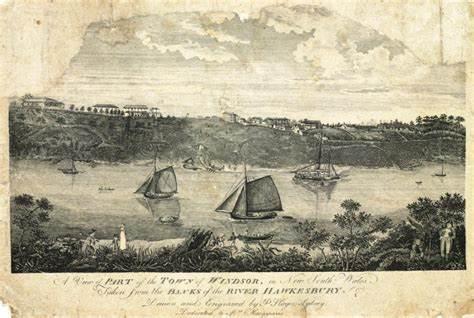
Settlement Develops

PIONEERNAMESRECALLED HISTORICHAWKESBURY FARMS
They Were located on that portion of the riverbank known as Pitt Reach, and others on South Creek, whichmoreorlessoccupiedthatportion,oftheriver knownasWilberforceReach.
In 1821 the original grantees still occupied these grants These farms were settled early in the year 1794, and in August of the same year there were seventy settlers on the river; in June 1795, the populationtotalled400persons
GovernorBlighhadafarmontheHawkesbury,about amilefromPittTownin1807,whichwasinchargeof AndrewThompson,oneoftheearlyandmostnotable settlersoftheHawkesburydistrict GovernorBligh's farm was composed of three grants James Simpson's 100 acres, given by Governor King, 31st March 1802, and two other grants be longing to Thomas. Tyler, 60 acres, given by Governor Hunter on 1st May 1797, and eleven acres given by Governor King,12thApril1803.
These were purchases by Governor Bligh from the original grantee The oak trees on the estate were said to have been planted by his daughter (Mrs. Putland)andwereknowninthelocalityasGovernor Bligh'soaks
Andrew Thompson died at the Hawkesbury on the 22nd of October 1810, two months before the townshipsinthedistrictwereproclaimed,attheage of 37 years. He owned a great deal of property here, and Governor Macquarie erected a tombstone to his honour,onwhichitisstatedthathewasaJusticeof thePeaceandMagistrateoftheTerritory.
Amongst the early settlers we find the names of Lieutenant William Cox, of the New South Wales Corps,whobuiltandowned"Clarendon,"whichwas afterwards occupied by Mr Dight "Hobartville" also belonged to the Coxs; it was in later years the propertyofAndrewTown Hereheheldannualhorse sales, which were well known throughout the district.
AnotheroldNewSouthWalesCorpsofficerwasLieut. Archibald Bell, who was appointed Police Magistrate atWindsoron16thNovember1825.
Assistant Surgeon Thomas Arndell, who came out withtheFirstFleet,andretiredon30thJune1795,in ordertosettleinNewSouthWales,receivedagrant atCattaiCreek.
Lieut SamuelNorth,oftheRoyalVeteranCompany, was at one time Police Magistrate at Windsor He resided here with his family at the old Government House Inthosedaystherewasalwaysadetachment of some regiment stationed at Windsor, in the old timestheheadquartersofaregiment.
SamuelEdgerton,bandmasterofthe80thRegiment, stationed in the Colony in 1836 1844, returned to settle on old Peninsular Farm Cottage, overlooking Peninsula Estate He afterwards became Captain of theWindsorVolunteers.
TheWalkers,ofWindsor,datebacktheirassociation withthedistrictto1837 ThelateWilliamWalkerwas MLA for Windsor, and afterwards became Member oftheLegislativeCouncil.
Surgeon William Bowman, T. Cadell, Rev. Robert Hassell, Rev Henry T Styles are names of other pioneersettlers.
Settlement Develops
TheHawkesburysettlersfrom timeimmemorialhavealways beenloyalsubjects.Evensofar backasGovernorBligh'stime, whenthemilitarydeposedBligh, theHawkesburysettlers,almost toaman,remainedloyaltohim.
BlighstatedatthetrialofMajorJohnston,inEngland, that had he been able to escape from Sydney to the Hawkesbury, he would have been safe from the attacksofhisenemies
It was natural that after the appointment of a new Governor (Macquarie), the Hawkesbury settlers should exhibit the same loyalty to Bligh's successor, andthisfeelingwaswarmlycontinuedthroughoutthe longperiodofMacquarie'sgovernorship.
The following is from the records, and whilst exhibiting loyalty, at the same time shows the high opinion the settlers had of William Cox, the founder of the well known family of that name, and what is stillmoreinteresting,givesthenamesofthepioneer Hawkesbury settlers who helped to develop the resources, not only of this grand district, but of the thenunknowninterior.
Many of their names are familiar to us, and descendants of some are still with us Quite an interesting chapter could be written of these old identitieswouldtimeandspacepermit.However,itis interesting to keep a record of the names of these pioneers who first, with axe and fire, prepared the wayforagriculture,makingtheHawkesburythefirst granaryofthecolony,fromwhichallitsfoodsupplies came.
It should be remembered that only 16 years prior to the address being handed Macquarie, Governor Phillip had placed the first 22 Hawkesbury settlers on the banks of the Hawkesbury and at the mouth of South Creek. Strange to say, none of the first settlers' names appear on the address.
HAWKESBURY SETTLERS' ADDRESS
Thefollowingaddressfromthesettlersofthe Hawkesburywaspresentedonthe1stinstant (Dec.1810)toHisExcellencytheGovernor (Macquarie)atWindsor(formerlytheGreen Hills),byThomasArndell,Esq.on1st December1810.We,theundersignedsettlers, residentsoftheHawkesburyanditsvicinity, begleaverespectfullytocongratulateyour Excellencyonyourarrivalatthissettlement, andearnestlyhopeyourExcellencywillbe pleasedwiththeagriculturalimprovements andindustrythatprevailshere,andtrust thatthecontinuanceofourexertionswill evermerityourExcellency'sapprobation. We also beg leave to return our unfeigned thanks for your Excellency's recent appointment of William Cox, Esq as a magistrateatthisplace agentlemanwhoformanyyearshas residedamongus,possessingouresteemandconfidence,who, fromhislocalknowledgeofthissettlement,combinedwithhis many other good qualities, will, we are convinced, promote your Excellency's benign intention of distributing justice and happiness to all. Thomas Arndell, Thomas Hobby, Benjamin Carver, George Hall, Lawrence May, Robert Masters, James Richards, Henry Baldwin, Paul Bushell, Robert Farlow, William Baker, John Yoel, Thomas Matcham Pitt, James Blackman, John Merritt, John Cobcroft, John Gregory, Richard Norris, William Heydon, Thomas Hampson, Daniel McKay, Daniel Fane, John Lyoner, Henry Murray, John Jones, JamesMilaman,R Fitzgerald,JohnStevenson,RobertWilson, Jonathan Griffiths, Elizabeth Earl, G Evans, John Bowman, Hugh Devlin, John Watts, William Eaton, David Bell, James Welsh, Patrick Closhel, William Carlisle, Thomas Gordon, Caleb Wilson, Thomas Markwell, Thomas Winston, William Baxter,ThomasHagger,JohnBaylis,DonaldKennedy,Patrick Murphy, Owen Tierney, William Shaw, John Dight, Roger Connor, Matthew Lock, Edward Pugh, William Small, James Wall, William Faithful, William Simpson, Thomas Arkell, Charles Palmer, Thomas Weyham, Elias Bishop, Thomas Spencer, Joseph McCoulding, Benjamin Baits, John Ryan, Robert Smith, Paul Randall, John Wild, Benjamin South, William Etrel, Henry Lamb, Martin Mentz, Robert Guy, John Harris, Thomas Cheshire, Stephen Smith, Thomas Lambley, Edward Field, Rowland Edwards, George Collis, James Portsmouth,PierceCollett,JacobRussell,ThomasAppledore, William Dye, R. Carr, John Leese, Thomas Cowling, John Embrey,JohnBenson,John &WilliamEzzy.
Settlement Develops
Hawkesbury, 5th December 1810. Sir, I beg you will make known to those respectable settlers of the Hawkesbury who signed the address presented by you to me that I am much pleased with the sentiments it conveys, and to assure them that it will always be an object of the greatest interest to me to promote their prosperity by every means in my power. With this view I have fixed on ground for your different townships (Windsor, Richmond, Wilberforce,PittTown)fortheaccommodationofthe settlerswhohavesufferedsoseverelybythefloodsof theriver;andbyaspeedyremovaltothosesituations of security, I hope they will enjoy the fruits of that labour which, I am happy to observe, promises this seasontoberewarded;withoneofthefinestcrops,I everbeheldinanycountry.
Ihopeonmyreturntothispartofthecolonytofind the new habitations built on an improved and enlargedplantothosehithertoerectedonthebanks oftheHawkesbury
IamverygladtofindthatmyappointmentofMr Cox has met with the satisfaction of the settlers, and I have every reason to believe that he will fulfil the dutiesofhisofficesoastogainthegoodwillofall Ihave,etc.,
LACHLANMACQUARIE.
Arndell,Esq
By1795thesettlementhad stretchedalongbothsidesof theriverbanksandthe populationgrewquickly.
Anumberofskirmishesbetweenthesettlers andtheaboriginaltribesinthedistrictwere reported, with deaths occurring on both sides.
Afteranumerousconfrontationbetweenthe localDharugaboriginaltribeandthesettlers, a detachment of the NSW Corp was sent to safeguardthearea.
The detachment remained permanently in the district for over half a century. In 1802 Governor King interviewed several natives from the Hawkesbury, and they stated: that they did not like to be driven from the few places that were left on the banks of the river,wheretheyalonecouldprocurefood.
King promised not to establish any more settlers lower down the river, in return the aborigines promised to be amicable. However, there were still problems a few yearslater.
Source:3HRNSW,Vol 5,p 513
Hawkesbury Herald (Windsor, NSW), Friday 16 October 1903.

To which His Excellency was pleased to make the following answer...
Pioneer
TomanyoftheoldHawkesburyfamiliesthe establishmentduringthelastyearofaclub inSydneylimitedtodescendantsofanyoff theoldpioneersofAustralia,followingon theideaoftheMayflowerClubofAmerica, shouldbeaninterestingevent.
The inauguration of such a club is bound to have a beneficial effect in encouraging proper Australian sentiment, and already it is doing much in that directionbygatheringattheclubroomsanAustralian portrait gallery of early pioneers, where some fifty such portraits are now shown, and others are in courseofpreparationtoaddtothose.
Further, is the intended to collect a national library and a museum of Australian relics, and generally gathertogetherinterestinghistoricalrecordsofearly Australia
Aperusalofacopyoftherulesand,officiallistofthe members at present enrolled will at once show that the club has been well and properly established and hascometostay Dr J C Cox,thefirstpresidentof the Club, claims Captain William Cox, formerly of Clarendon, on the Hawkesbury, and whose remains lie buried in old St. Matthew's, Windsor, as the pioneer from whom he springs, but one is sorry to notice that many of the old Hawkesbury families' namesaremissingfromthelist;thiscannotbefrom lack of sentiment on their part, for our native Hawkesburyites are proud, and have reason to be proud, of their Australian forefathers, and no doubt manyofthemarenotawareoftheexistenceandrules oftheclub,orelsethedescendantsofthepioneersof theHawkesburywouldshowthattheywereprepared to stand by those who are doing so much to get the descendants of these old families once more in as closetouchwithoneanotherastheirforefatherswere inthegoodolddays.
Windsor and Richmond Gazette (NSW), Saturday 27 May 1911
THE PIONEER CLUB By George R NicholsIt is well known that old families who were on the most intimate and friendly terms a century ago, fighting side by side to establish homes and a competency for their children and their descendants, have now drifted apart in the whirligig of life and the altered circumstances of the country, and their descendants are now strangers to one another, but at the pioneer club they can again meet and fight their forefathers' battles over again and re establish that brotherly feeling which in those good old days made every pioneer speak of and know each other by his Christian name, a homely custom now long since dead.
The club has established itself in commodious quarters in Hunter Street, Sydney, and has been fortunate in securing the services of a most competent and energetic secretary in Mr D Hope Johnston, a descendant of Colonel George Johnston, famous in Australian history for arresting Governor Bligh on 26th January 1808
ln the club Mr Johnston daily meets descendants of the equally famous captain of the Bounty on the most friendly terms, brought about by the exercise of Australian sentiment so carefully nursed and encouraged by the worthy president and officers who have the welfare of the club at heart.
I trust by drawing the attention of the readers of this journal to this matter, that many of our old families will see that the descendants of early pioneers of the Hawkesbury will at once have their names enrolled on the list of the members of the Pioneer Club, and thus encourage what Lord Chelmsford described as a noble national sentiment, ''for'' he said the unearthing and preserving of all that appertains to the early history of Australia was the work of the present generation, for it is on the historical records of the past that national sentiment is founded.
The club's accepted motto is “Primi in Terras Australes” with a crest showing an 18th century plough with the rising sun; this above all should commend itself to a Hawkesbury native.
The
of the
CLUBHISTORY
OUR MOTTO
OUR PURPOSE
in
Association, are to
the
OUR FUTURE
Since
foundation in 1910 the Australasian
Club has continuously attracted a thriving
Its continued success is assured by the Members’ pride in Australia’s past, their active participation in its present and their unbounded faith in the Nation’s future.

INSPIRATION IS TAKEN FROM THE PIONEERS’ PRAYER:
L e t u s r e m e m b e r o u r a n c e s t o r s t h e p i o n e e r s t h r o u g h w h o s e t o i l a n d s u f f e r i n g a n d s a c r i f i c e , a n d b y t h e G r a c e o f a D i v i n e P r o v i d e n c e , w e i n h e r i t o u r l i b e r t i e s , o u r w a y o f l i f e a n d o u r p l a c e a m o n g t h e g r e a t n a t i o n s o f t h e e a r t h . w w w . a u s t r a l i a n s e t t l e r s . c o m
The membership is confined to descendants in the male line of and bearing the surname of any officer or man of the naval and military forces, any officer or man of the mercantile marine, any officer or man of the civil establishment, or any landholder who resided in New South Wales prior to 1810, South Australia 1838, Victoria 1839, West Australia 1845, Norfolk Island 1810, New Zealand 1848, Tasmania 1825, or Queensland 1847, or descendants in either male or female line 01 any member of Captain Cook's expedition to Australia, the first fleet of 1788, the first regiment of 1790 3, or the first settlers to 1793 in New South Wales
Hon James White
James White (1828-1890), pastoralist and racehorse owner and breeder, was born on 19 July 1828 at Stroud, New South Wales, eldest son of James White and his wife Sarah, née Crossman.
HisfatherhadarrivedinSydneyon24July1826inthe FairfieldasanoverseerfortheAustralianAgricultural Co, and acquired land in the Hunter River district includingEdinglassie,nearMuswellbrook.Jameswas educated at The King's School, Parramatta, and by Rev JohnGregoratWestMaitland
In 1842 his father died leaving goods valued for probate at £15,000 and real estate, to be divided equally among his seven sons and two daughters. James returned home to manage Edinglassie, Timor, andBoorroomaontheBarwonRiver
InpartnershipwithhisbrothersFrancisandGeorge, James leased Belltrees, near Scone, from William CharlesWentworthin1848,boughtitin1853andlater addedtheadjoiningWaverleystation.
From 1848 they acquired other freehold property in the Hunter River district including Merton and Dalswinton.
About 1860 White bought the freehold estate, Martindale,nearMuswellbrook,wherehelivedinthe 1860s and made well known for fattening cattle. He was a magistrate and in 1864 a sheep director for Merriwa
InDecemberWhitewaselectedbyalargemajorityto the Legislative Assembly for the Upper Hunter, despiteabusefromhisopponentThomasDangar In favour of free selection, railway expansion and taxes on luxuries, he confessed himself 'not quite equal to grapple'withtheeducationquestion.
On 8 May 1868 he resigned from parliament and visited England and the United States of America; while in England he and his brothers bought Segenhoe in the Hunter Valley. Soon after his return, he was defeated for the Upper Hunter by John Mildred Creed.
By his early thirties, James White was a very wealthy member of Australia’s exclusive squattocracy, and as a group, such men were politically active and ruthless in exercising their power and protecting their interests.

Cranbrook Rose Bay
About 1873 James White bought Cranbrook, Rose Bay, from the estate of Robert Towns and engaged John Horbury Hunt to carry out large extensions. He filled it with 'costly art treasures': European porcelain and pictures by Italian, German and English artists.
Cranbrook served as Government House for New South Wales from 1901 to 1917

Cranbrook, selected by the N.S.W. Government as the residence of the State Governor, is situated at Rose Bay, and more delightful grounds than those attached could not be imagined. Cranbrook is a perfect Paradise.
Daily Telegraph (Sydney, NSW)
Cranbrook Rose Bay
"The interior possess many costly art treasures rare China of Dresden, Meissen, Sevres, and Vienna manufacture, also from Worcester and the potteries of England.
In the drawing room there may be seen a magnificent specimen of ivory carving a female figure carved from a block of ivory fully two feet long. Pictures by Italian, German and English artists decorate the walls."
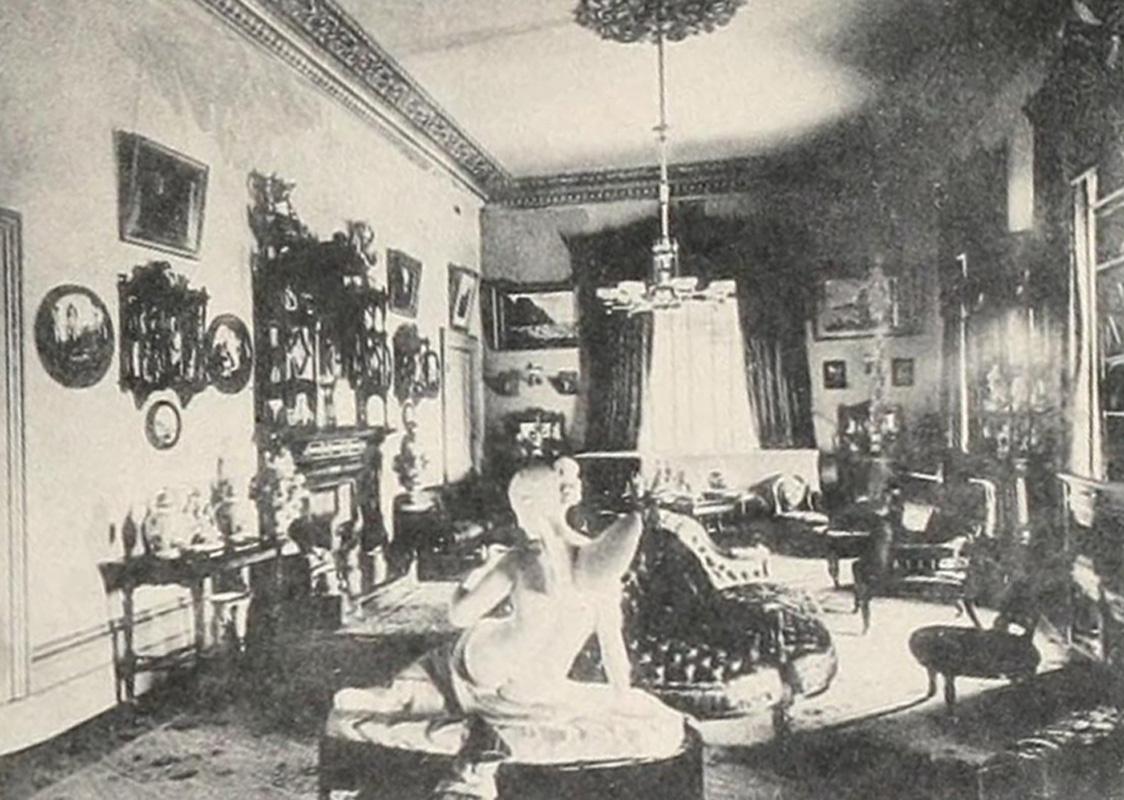
These art treasures are shown below in photos of the hallway and drawing room.

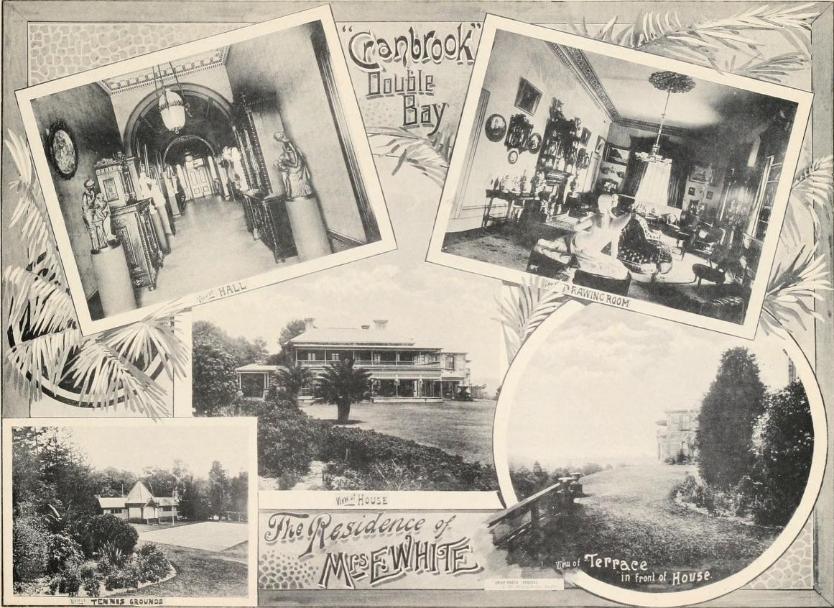
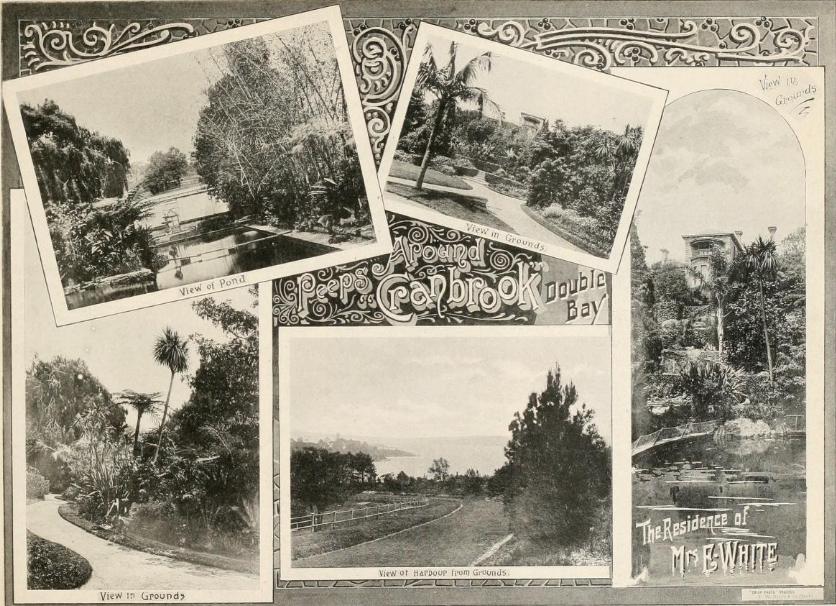
Cranbrook Rose Bay
G A R D E N N O T E S
Aswehavementioned,thisplateauhasundergone great improvements, having been enlarged, with the carriage drive alongside of me mansion borderedwithflowerbedsandplantedwithchoice rhododendrons, camellias, tree ferns, fuchsias, while on the lawn on the eastern side of the mansion goodly specimen of phoenix are also plantedastogivetheplaceahighlyornamental appearance.
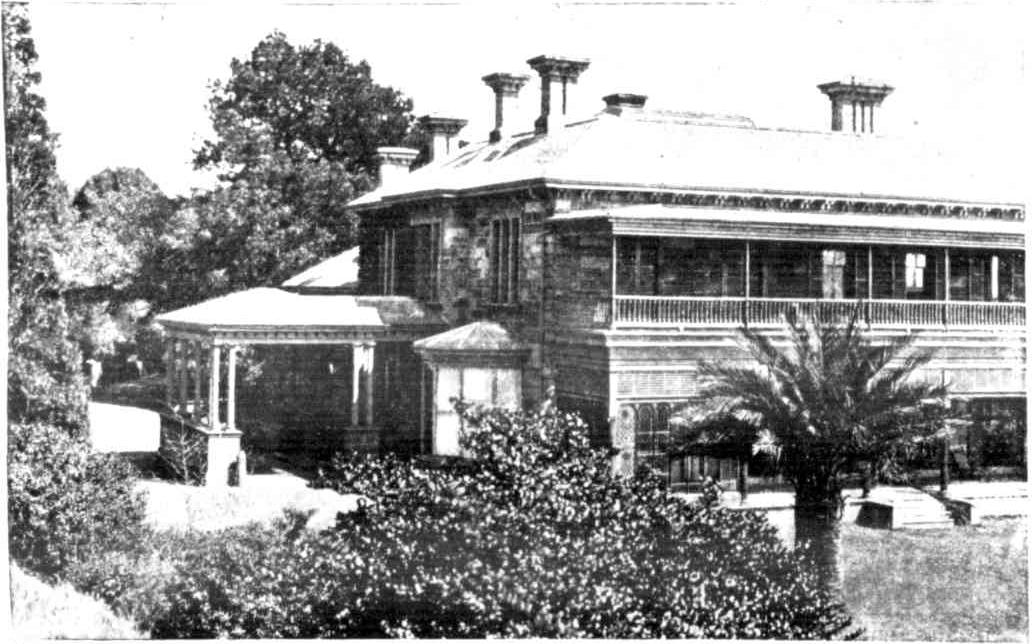
Itisnowsometwentyyearssincethis estate,whichissituatedonrising groundonthesouthernBideofthe SouthHeadRoad,intermediate betweenthefineindentsofthewaters ofPortJacksonknownasDoubleBay andRoseBay,wasfirstredeemed fromitsnativewaste;thethenowner, Mr.RobertTooth,gavethefirsttouch ofarttotheestate.
Hissuccessor,thelateHon.RobertTowns,alsohis mite towards improving it but the last improvements of all, by the present proprietor, havemateriallygiventhefinishingstroketowhat maynowbeconsideredoneoftheleadingplacesin thecolony.
Wemaypremisethatweknowofnoothersituation wheresuchagloriousviewmaybeobtainedas fromtheterraceorplateauonwhichthemansion is situated. From here may be seen the Pacific OceanaboutBondiandfromeasttowestaseries ofgrandpanoramicviewsoftheentranceofPort Jackson,theheightsofStLeonards,DarlingPoint, ParramattaRiver,withtheBlueMountainsinthe distance;whilenorthward,Manlyandtheocean beyondopenouttothe view
Andviewthewondersofthisland.
Theentrancetothegroundsisfromthe BellevueRoad,DoubleBay,andformsa continuouslengthpastthemansiontoitsexit atthecommencementofRoseBay,atwhich placesveryelegantlodgesaresituated.
Ofthemansionitselfwemayremarkthatitis alargestructurebuiltintheAustralian Italianstyleofarchitecture,havingallthe appliancesofafirstclasshouse.
Fronting the plateau are a series of terraces, havingaflightofstepsleadingthroughthem The sustainingwallsoftheterracesarecoveredwith theusefulclimbingfig.
Walks,asamatterofcourse,runalongthemargins of each terrace, which form a series of very beautifulflowergardens,andatthetimeofour visit were gay with roses, choice pelargoniums, gladioli,petunias,stocks,andshrubsofallknown excellence
Onthelevelpieceoflandatthebottomofthese terraces,andbetweenthelawnsandparterres,are situated a goodlysized bush house and a conservatory
Inthebushhousewenoticedgoodlyspecimensof fuchsias, thus shoving the adaptability of these structuresforthisclassofplants,goodlyplantsof rhododendrons, nero van tromp coriaceum, magnum bunom and goodly specimens of tree ferns, gloxinias, variegated ferns, colons, and begoniasinlullflower Ericasoftheventricoea sectionappeartothriveexcellently
e
Cranbrook Rose Bay
G A R D E N N O T E S
Theconservatory,which measuressomeforty-eightfeet bythirtyfeet,isperhaps,owing totheperfectnessoffittings,hot waterapparatus,oneofthebest structuresinthecolony.
Eventhestokeholeappliancesaresoperfectasto remind us of our young days in the mother country NoexpensehasbeensparedbyMr James Whiteinfurnishingthisstructurewiththebest plants procurable, and as such the collection is veryvaluableandchoice.
W hAnenumerationofitscontentswouldbebeyond ourprovince:sufficeittosaythatamongstthe many we noticed fine plants of Ixora coocinia superbainfullflower;clerodendrums,balfouriand Thompsonii; Cypripedium barbatum, anthurium schcrtzeriaum, eranthemum lacteum, calanthe species
J a m e s
n
Averyhandsomeplantofnepenthes,beingwell furnished with pitchers, was a source of great attraction Inthewayoforotona,goodexamplesof C.magnolifolia,Macafeeana,coinuta,Veitchii,and Johannes,werewellintermixedwithotherpUnts, such ascaladiums of the leading kinds and dracamasoftheknownspeciesinthecolony;while for beauty a goodly specimen of adiantum farleyense, gymnogrammas, tydeas, lycopodum phragmites and anthurium regale formed very attractivefeatures.
HThenewabutilonsellovianumpromisesonaccount ofitsfinefoliagetobecomeaveryvaluablepot plant Pendantfromtheroofaregoodlybasketsof hangingplants;andinthewayoforchids,afine collection of the best kinds are verging fast towardsexcellence.
Thevaluablenessofthebeautifulwhiteflowered stephanotus fioribunda for conservatory decorationwaswellillustratedbyafineflowering specimeninthishouse;andasafineadditionto ferns, the crested dicksonia dubis is, we consideredfromtheappearanceofaspecimen,one ofthebestfernswehave.
In our exit from the conservatory on its eastern side we came upon a neat lawn, with fountain and flowerbeds surrounding it, and from this a large sheet of water extends some hundred feet in the same direction, having an island in its midst, planted with tree ferns;whileinthelake,ifwemaysotermit,black swansandfancydocksweredisportingthemselves,and givingtheplaceapicturesqueappearance Here,onthe margin of this sheet of water, are beds with tree ferns, rhododendrons,andothervaluableshrubs
The continuation of these lower grounds to the boundary consists of neat lawns, flowerbeds, and as a boundary to the garden and extensive plantations extends along the main road and the park fence to the ouriagediive near the mansion. Viewed as a whole, the place, owing to the goodly specimens of camphors, tecomas, and other trees, presents a tine park like appearance; and it would appear to be the object of the gardener, Mr Henry Parcel, to have the beds and plantationonecontinualmassofflowertheyearround.

e
Cranbrook Rose Bay

G A R D E N N O T E S
In the park like paddock bounding the garden on the east are perhaps the finest specimens of our Christinas bushes known, and present at that festive season a very handsome appearance
As a matter of course, an estate like this would be incomplete without its culinary garden, which is here situated on the western side of the estate; the land being somewhat sandy, with a sharp incline. However, with plenty of manure, irrigation, and attention, good crops or vegetables are raised, and as a partial shelter all kinds of fruit trees find a home and thrive well.
The more level portion of this part is devoted to strawberry plantations, and on each side of an extensive waterway that goes through the garden to the ornamental sheet of water are fine specimens of the purple guava which, if anything, bear too abundant crops of fruit; and under rocks the various species of bananas thrive, and fruit admit ably.


a m e s W h i
Goodly specimens of mandarin oranges abound also here and appear to like the situation We may close this brief report by saying that the place is kept in the highest order of cleanliness, and that the proprietor's wishes of excellence in all things would appear to be ably carried out by the head gardener, Mr H Parcel
Hon James White
Along-timecommitteemanofthe AustralianJockeyClub,Whitewas chairmanin1880and1883-90and didmuchtopromoteracing. HisfirsttwohorseswereGoulburn andHotspur,steeplechaserswhich wonmanycross-countryraces.
Inthemid 1870sheboughtKirkham,nearCamden, where Hunt built him two houses, one a 'French inspired fairy castle'. Kirkham became his main horse stud,althoughhealsobredhorsesatSegenhoe andpaidhighpricesforpromisingyoungsters,such as1200guineasforMartiniHenry.
He also built the lavish Newmarket Stables at RandwickwherehishorsesweretrainedbyMichael Fennelly(d1887)andlaterbyTomPayten In1876WhiteboughtChesterfromEdwardCox andnextyearbeganasensationaltwelve year careerontheturfwhenChesterwontheVictoria RacingClub'sDerby MelbourneCupdouble;the stallionhad19winsfrom29startsandwasonly 3timesunplacedbeforebecomingtopsire.
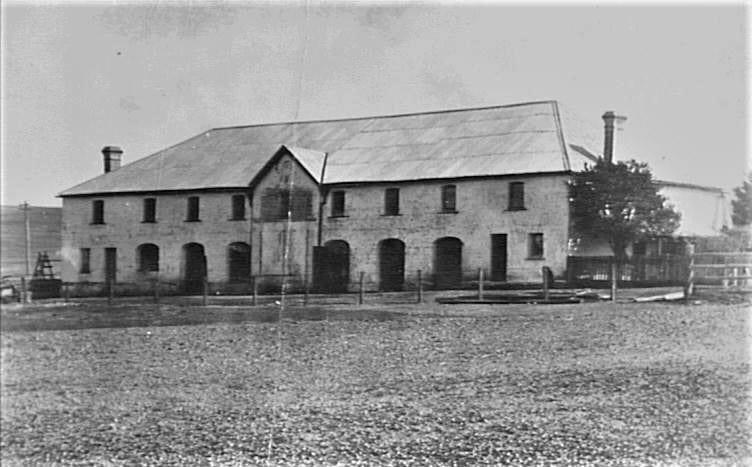
MWhite won five A.J.C. Derbys in 1884 89, five A.J.C. Sires'ProduceStakesin1885 90,fiveVRC StLegers in1886 90andsixVRC Derbysin1877 90,among mostotherimportantraces.Outof302ridesforhim TomHalesrode137winners
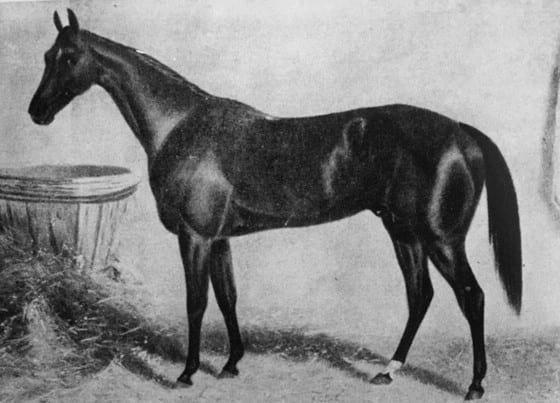
1877 was remarkable for the presence of two very high class three year olds each amongst the best gallopers to race in Australia in the nineteenth century – in Chester and First King. At that time in Australia’s history, nothing added spice to the game of racing more than a dash of inter colonial rivalry conducted across the banks of the Murray River.
Given that Chester hailed from New South Wales while First King came from Victoria, opinions on the merits of each colt varied markedly according to geography. The two colts each happened to make their racing debut on New Year’s Day, albeit one at Randwick and the other at Flemington.
Hon James White
White'sothergreathorsesincluded MartiniHenry,winneroftheVictoria Derby MelbourneCupdouble; Abercorn,whoracedagainstCarbine andwhosewinsincludedtheA.J.C. Sires'ProduceStakesandtheA.J.C.

ChampionStakesandA.J.C.StLeger (1888)andtheMetropolitan(1889); Democrat,winneroftheSydneyCup Metropolitandouble(1878);and DerbywinnersNordenfeldt,Trident, Ensign,DreadnoughtandSingapore.
Possessed of 'the
White was also a
He
Hon James White
In1875hesoldMartindaletohisbrother Edwardinconsiderationofanannuityof £5000tohimselfand£2500tohiswife.
On 14 July 1874 he was appointed to the Legislative Council; next year he was elected to the local Royal Society and became a founding member of the LinneanSocietyofNewSouthWales.
A representative commissioner for New South Wales atthePhiladelphiaInternationalExhibitionin1876,he was also a commissioner for the exhibitions in Paris (1878) and Melbourne (1880) and the Colonial and IndianExhibition,London(1886) In1889hehadgiven twentybloodmarestohisnephewsatBelltrees
In the 1880s he was a vice president of the Agricultural Society of New South Wales, the Horticultural Society of New South Wales and the Union Club, a committeeman of the Animals' ProtectionSocietyofNewSouthWales,amemberof the Warrigal Club and a director and sometime chairmanoftheMercantileBankofSydney
Early in 1890 White retired as chairman of the A.J.C. and in April sold most of his racehorses for some 16,745guineas,Titanbringingtherecordpriceof4600 guineas
HediedofheartdiseaseatCranbrookon13 July1890andwasburiedintheAnglican sectionofWaverleycemetery.
HewassurvivedbyhiswifeEmilyElizabeth,daughter ofJamesArndell,whomhehadmarriedatMerton, NewSouthWales,on9July1856;shesharedhisloveof racing
Hisestatewasvaluedforprobateatalmost£350,000 andwilledtohisbrothers,nephews,andhiswifewho inheritedCranbrook,Kirkham,£5000andanannuity of£2500
On 4 August 1896 at the Woollahra Presbyterian Church EmilyWhitemarriedCaptainWilliamScott, M.R.C.V.S.,aged37andprincipalveterinarysurgeon intheNewSouthWalesDefenceForces;shediedon 28October1897atMelrose,Roxburghshire,Scotland
Evening News (Sydney, NSW), Wednesday 16 July 1890.
BurialoftheHon.JamesWhite
Yesterdayafternoonthefuneralofthelate Hon.J.Whitetookplace.Itmovedfromhis lateresidence,Cranbrook;RoseBay,and wasverylargelyattendedbymanyofthe mostrespectedcitizensofthemetropolis.
Thecoffinwasofvarnishedoakwithsilvermountings, andasmallsilverplategivingthename,dateofbirth,and death,whiletherewerenodecorationsaboutthehearse Theonlydisplaymade andthatwasagreatone wasinthewayofthewreathsandfloraltributes They weremany,variedindesigns,butallrich Thecoffin wascompletelyenvelopedinthem
Among them were the following: Australian Jockey Club, large wreath of choice white flowers with white and blue ribbons; Canterbury Patk Racing Club, Tattersail's Club, WarwickFarmRacingClub,SouthAustralianJockeyClub, Union Club, Warrigal Club, large horseshoe and arrow of whiteflowersandviolets;'RosehillRacingClub,largewreath of choicest white flowers; Lord and Lady Carrington, do, attachedtowhichwasacardinscribed Withthesincere sympathyofLordandLadyCarrington,asamarkofrespect and regards the Mayor and Mayoress of Sydney; Mr F C Joseph,crossoflilies;Mrs.Thomas,wreathofsouvenirroses, Mr CharlesE Riddle,largewreathofchoicestwhiteflowers, theservantsofCranbrook
ThepallbearerswereMessrs.C.M.Lloyd,V.J.Dowling,F.J. Weaver,' P Mackellar, H C Dangar, and G Cobb A more unsatisfactoryafternooninthewayofweathercouldnothave beenthanthatattheWaverleyCemetery.
Sogreatwastheattendanceroundthegravethatmanycouldnot getnightoheartheserviceread.Amongstthefollowerswerethe committee of the A.J.C., the PostmasterGeneral (Hon. Daniel O'Connor), the President of the Legislative Council (Hon Sir John Hay), Sir John Robertson, MajorGeneral Richardson, InspectorGeneralFosbery;theHons.SirWilliamManning,John Lackey, S A Joseph, R H D White, W A Long, Alexander Dodds,G.H.Cox,andE.Knox,Ms.L.C.;Messrs.G.H.Reid,J.P. Abbott,J.R.Street,C.A.Goodchap,R.G.Fitzgerald,T.T.Ewing, Ms LA;theRev H WallaceMort,theRev G H Allnutt,Dr Cox,Dr.Traill,Messrs.C.B.Fairfax,P.O.Williams,H.Austin,T. S. Clibborn (secretary to A.J.C.), James Perry (secretary to Tattersail's Club), W B Walford, Walter Hall, GN Griffiths, Ewen,E.M.Betts,J.A.Searr,RichardJones,J.deV.Lamb,Mr.G. B Bowley (secretary Rosehill Racing Club), Mr Ackman, H Oxenham,M Macnamara,Ebsworth,Hunt,Jas Johnson,T Pay ten,HenryRaynor,T.Lamond,andJ.Monaghan.



